#(the recipe I was basing this off of said almond milk etc etc but like I'm listening to that)
Explore tagged Tumblr posts
Text
A Recipe for Daropaka and a Korithian Meal

Hello everyone! (More than) A few days ago I said that, as a way to celebrate reaching 200 followers that I would make one of the dishes from the setting of my WIP. I did something similar for 100 followers which you can see here. This time around I put up a poll to see what dish you all would like to see based on the favorite dishes of my OCs. You voted for Otilia's favorite food, a cheesecake (Daropaka) from the land of Korithia.
However because I felt a bit bad about how long it took me to get to this and because I needed to make something for dinner anyway, I prepared an entire Korithian meal, specifically the last dinner Otilia ate before she left her homeland.
I will give a short description and some history for each component of the meal and will also provide recipes. These recipes come specifically from the Korithian city-state of Kalmanati.
BIG POST ALERT

The diet of Korithians is highly reliant on cereals, grapes, and olives. Barley is the most commonly consumed cereal and is used in the bread of most commoners. However, Kalmanati is famed for the quality of its wheat, and particularly among the wealthy, wheat is the cereal grain of choice. Legumes (Lentils, peas, vetch, beans, etc), vegetables (Cabbage, carrots, lettuce, seaweeds, artichokes, asparagus, onions, garlic, cucumber, beets, parsnips, etc.) and fruits/nuts (pomegranate, almond, fig, pear, plum, apple, dates, chestnuts, beechnuts, walnuts, rilogabo(Kishite regalu "Sunfruit"), bokigabo (Kishite botagalu "Northern fruit), etc.) also make up a significant portion of the Korithian diet, with meat (Cattle, lamb, pig, goat, goose, duck, horned-rabbit, game) and fish typically filling a relatively minor role except for in the diets of wealthy individuals (like Otilia).
Vinegar, oil, and garlic appear in almost all Korithian dishes and are an essential aspect of the Korithian palate.
Recipes below the cut!

The components of the meal are as follows:
Daropaka: (Korithian: Daro = cheese, paka = cake)
Karunbarono: (Korithian: Karun = meat, baro = fire (barono = roasted) )
Pasrosi Diki: (Korithian: Pasrosi = fish(es), Diki = small)
Psampisa : (Korithian: Psamsa = bread, episa = flat)
Akuraros : (Korithian: Akuraros = cucumber)
Ewisasi : (Korithian: Ewisasi = olives)
Funemikiwados: (Korithian: Funemiki = hill (mountain diminutive), wados = oil/sauce)
Wumos: (Korithian: Wumos = wine)
Daropaka aka Awaxpaka aka Korithian Cheesecake
Daropaka is a popular dessert in Korithia, however its origins predate Korithia by several thousand years.
The dish originates from a race of forestfolk living on the Minosa, known as the Awaxi. The Awaxi were a tall and powerful race, some rivaling even demigods in size. Aside from their size the Awaxi were also easily identifiable by the third eye which sat on their forehead and the porcupine like quills which grew from their shoulders, sometimes called the Awaxi mantle.
The Awaxi were a primarily pastoralist civilization, living in small semi-temporary communities where they raised cattle and goats. They are credited with inventing cheese.
The first humans that the Awaxi came into contact with were the Arkodians. The Arkodians introduced the Awaxi to metallurgy, and in exchange the Arkodians were given knowledge of the cheesemaking process. This early form of cheese was called darawa (Korithian: Daro) and was typically made from cow's milk and vinegar, the resulting cheese being soft and crumbly, similar to a ricotta.
Unfortunately peace would not last. The Awaxi settled disagreements and debates often through duels, rather than through war. While quite skilled duelists, their culture had no reference for strategy in battle and lacked the proper skills to fend off the organized assault from imperialistic Arkodians. The Awaxi were eventually driven to extinction, though they still appear as monsters in Korithian myth.
The Arkodians themselves would later fall, destroyed by the Kishites, however many of their recipes, including their recipe for cheesecake, would be passed down to their descendants, the Korithians.
Recipe
(Note that Korithia has no distinct set of measurements nor are recipes recorded. Recipes are typically passed down orally and differ greatly between regions and even families. Adjust ingredients to one's own liking) (Also note that this is not like a modern cheesecake, as it utilizes a ricotta like cheese the texture will not be as smooth and it doesn't use eggs as chickens have not yet been introduced to Korithia)
The Cheese
1/2 Gallon of Whole Cow or Goats Milk
1 Pinch of Sea Salt
2 Bay leaves
2 Tablespoons of White Vinegar
1 Large Ripe Pear
6 Tablespoons Honey
2 Tablespoons White Wheat Flour
1 Tablespoon Rilogabo Juice (substitute 1:1 Orange and Lemon juice)
The Crust
1 Cup White Wheat flour
Water, Warm
1 Pinch of Sea salt
The Topping
1 Sprig Rosemary
3 tablespoon honey
2 tablespoon rilogabo juice (see above)
1 Large pear (optional)
Fill a pot with milk. Stir in salt and add bay leaves. Heat over medium heat until milk registers around 190 F, do not allow to boil. Look for slight foaming on the surface, when the temperature has been reached, remove the bay leaves and add vinegar, the curds will begin to form immediately, stir to fully incorporate vinegar without breaking curds. Stop.
Take the pot off of the heat and cover, allow it to sit for 15 minutes.
Using cheesecloth, a fine mesh strainer or both, separate the curds from the whey. Allow the curds to cool and drain off excess liquid.
Preheat the oven to 410 F or 210 C. Grease the bottom and sides of an 8 inch cake pan with olive oil.
While cheese is draining, make the crust. Knead the white wheat flour with a pinch of salt and warm water for about 15-20 minutes, until obtaining a smooth consistency. Roll a thin circular sheet larger than the cake pan. Lay the dough inside, trim off any dough which hangs over the edge of the pan.
Skin and seed 1 large pear, using either a mortar and pestle or a food processor, break the pear down into a paste or puree, there should be no large visible chunks.
Combine drained cheese, 6 tbsp honey, pear puree, flour, and rilogabo juice. Using a food processor or other implement combine ingredients until a smooth texture is achieved. Taste and add honey accordingly
Pour the mixture into the pan, careful not to exceed the height of the crust. Top with a sprig of rosemary and place into the oven.
Cook for 25-30 minutes or until the filling has set and the surface is golden.
Make the topping by combining 3 tablespoons of honey and the remaining rilogabo juice.
Remove cake from the oven and pour the topping over the surface. Allow the cake to cool
Serve warm, cold, or room temperature with fresh fruit.
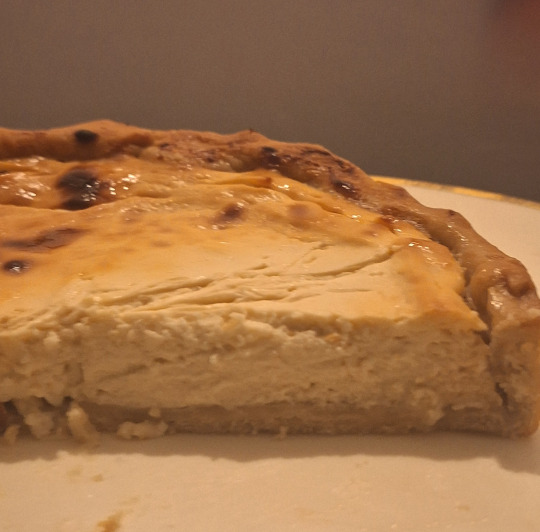
Karunbarono aka Roasted Meat
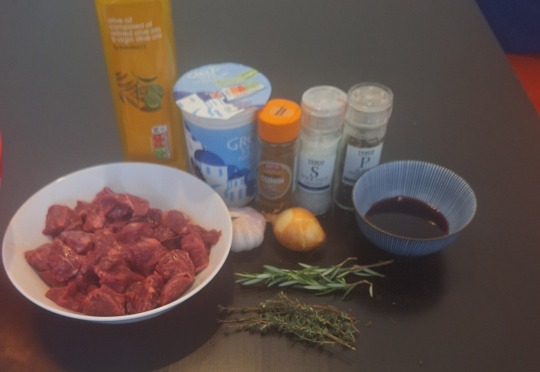
Cooking meat on skewers is a staple of Korithian cuisine, so much so that in certain regions the metal skewers or kartorosi, can be used as a form of currency. Meat is typically cooked over an open fire or on portable terracotta grills, though it is not unheard of to use a large beehive shaped oven or baros. The majority of the meat eaten by the lower classes comes in the form of small game such as rabbit or sausages made from the scraps of pork, beef, mutton, poultry, and even seafood left after the processing of more high-class cuts. The chicken has not yet been properly introduced to the islands, though some descendants of pre-Calamity chickens do exist, though they in most cases have drastically changed because of wild magic. Animals are rarely eaten young, lambs for example are almost never eaten as their potential for producing wool is too valuable. Most animals are allowed to age well past adulthood, except for in special circumstances. The practice of cooking meat in this style is prehistoric stretching back far before Korithia or Arkodai. What is newer however is the practice or marinading the meat before cooking it, this is a Korithian and later Kishite innovation.
Recipe
1 lb Mutton (meat used in this recipe), beef, lamb, venison, or horned-rabbit meat (in order to achieve this it is suggested to use wild hare meat in combination with pork fatback) chopped into bite sized pieces
4 Tablespoons Plain Greek Yogurt
4 Tablespoons Dry Red wine (Any dry red will work, for this recipe I used a Montepulciano d'abruzzo but an Agiorgitiko would work perfectly for this)
3 Tablespoons Olive Oil
4 Cloves of Garlic roughly chopped
1 Small onion roughly chopped
1 sprig fresh thyme
1 sprig fresh rosemary
1 tsp sea salt
1 tsp black pepper
1/2 tsp ground cumin
Gather and measure ingredients
Combine everything into a large bowl and stir, making sure that all pieces of meat are covered in the marinade.
Cover and allow meat to sit, preferably in the fridge for 2 hours or up to overnight.
Well the meat is marinating, if using wooden or bamboo skewers, soak in water for at least one hour to prevent burning.
Preheat the oven to 400 F or roughly 205 C. Or if cooking an open fire, allow an even coal bed to form.
Remove meat from the fridge, clean off excess marinade including any chunks of garlic or onion
Place meat tightly onto the skewers making sure that each piece is secure and will not fall off.
Brush each skewer with olive oil and additional salt and pepper to taste, optionally add a drizzle of red wine vinegar.
Place on a grate either in the oven with a pan below it to catch drippings or else over the fire. Allow to cook for 10-20 minutes depending on how well you want your meat cooked (less if using an open fire) Check every five minutes, flipping the meat after each check.
Remove from the oven and serve immediately.
Pasrosi Diki aka Little Fishes

Despite living by the sea, fish makes up a surprisingly small part of most Korithians' diet. The most valuable fish typically live far away from shore, where storms and sea monsters are a serious threat to ships. Much of the fish that is eaten are from smaller shallow water species, freshwater species, or shellfish. Tuna, swordfish, sturgeon, and ray are considered delicacies, typically reserved for the wealthy. Marine mammals such as porpoise are eaten on rare occasions, typically for ceremonial events. Pike, catfish, eel, sprats, sardines, mullet, squid, octopus, oysters, clams, and crabs are all consumed by the poorer classes. Sprats and sardines are by far the most well represented fish in the Korithian diet, typically fried or salted, or even ground and used in sauces. This particular recipe makes use of sprats. Unlike their neighbors in Baalkes and Ikopesh, Korithians rarely eat their fish raw with the exception of oysters.
Recipe
(Note that unlike modern recipes using whitebait, these are not breaded or battered as this particular cooking art has not yet been adopted in Korithia, though it is in its infancy in parts of Kishetal)
10-15 Sprats (other small fish or "whitebait" can also be used)
2 quarts of olive oil (not extra virgin)
Sea salt to taste
Black Pepper to Taste
Red Wine Vinegar to taste
Gather ingredients
Inspect fish, look for fish with clear eyes and with an inoffensive smell, avoid overly smelly or damaged fish.
Pour olive oil into a cast iron skillet or other high sided cooking vessel and heat to approximately 350 F or 177 C.
Fry the fish in batches of 5, stirring regularly to keep them from sticking. Cook for 2-4 minutes until the fish have started to crisp. Be careful, some fish may pop and spit.
Remove fish from the oil and allow them to drain.
Season fish with salt, pepper, and vinegar and serve.
Psampisa aka Flatbread
There are many varieties of bread eaten in Korithia and grain products make up anywhere from 50 to 80 percent of an average individuals diet. This particular variety of bread is most popular in the southern and eastern portions of Korithia, whereas a fluffier yeasted loaves are more commonly eaten in the west and north. This recipe is specifically made with wheat but similar breads can also be made with barley or with mixtures. If you do not want to make this bread yourself it can be substituted with most pita breads. Bread is served with every meal and some meals may feature multiple varieties of bread.
(Note for this recipe I only had self-raising flour at hand which gives a slightly puffier bread, if this is what you want add roughly 3 tsps baking powder)
Recipe
2 1/2 cups white wheat flour plus more for surface
1 1/2 teaspoons sea salt
1 cup whole fat greek yogurt
Olive oil for cooking
In a large bowl, mix together the flour, salt and baking powder. Add the yogurt and combine using a wooden spoon or hands until well incorporated
Transfer the dough to a lightly floured surface and knead by hand for 5 minutes until the dough feels smooth.
Cover the dough and allow to sit for approximately 20 minutes
Separate dough into desired number of flatbreads.
Add flour to each dough ball with your hands and then use a rolling pin to flatten out the dough on a lightly floured surface. Size is up to taste.
Heat a pan on medium high heat. Add the olive oil and cook the flatbreads one at a time for about 2-4 minutes, depending on thickness, per side until the bread is puffed and parts of it has become golden brown.
Akuraros aka Cucumber (Salad)

While the cucumber has become a relatively popular crop within Korithian agriculture it is not native and was all but unknown to their Arkodian predecessors. Cucumbers, which actually originated in Sinria and Ukar, were introduced by Kishite invaders during the Arko-Kishite war and were subsequently adopted by the survivors of that conflict. Cucumbers are associated with health and in particular with fertility. Cucumbers are typically eaten raw or pickled. They may be used in salads or even in drinks, ground into medicinal juices. Cucumbers are additionally believed to ward off disease carrying spirits and may be hung outside of the doors of sick individuals to ward off evil entities. Cucumbers are also fed to learning sages, as they are believed to strengthen the resolve and spirit. A potion consisting of the magical herbs wumopalo and lisapalo, wine, and cucumber juice has historically been used to temporarily induce in non-sages the ability to see spirits. Dill is additionally believed to produce positive effects, thought to ward of diseases of the stomach and cancers. Dill is often used in potions which may effect the physical nature of an individual, these potions are rarely used as their effects are most often permanent to some extent.
This particular cucumber salad recipe is a favorite in the region around Kalmanati, Bokith.
Recipe
1 large cucumber cleaned
2 cloves garlic roughly chopped
2 tablespoons fresh dill chopped
1/3 cup red wine vinegar
1/4 cup extra virgin olive oil
Salt to taste
Pepper to taste
Cumin to taste
Cut cucumber into thin slices (the actual width will vary dependent on taste)
Combine cucumber and all other ingredients in a non-reactive container and mix.
Cover and store the salad for at least 30 minutes and up to 12 hours.
Serve cold
Ewisasi aka Olives
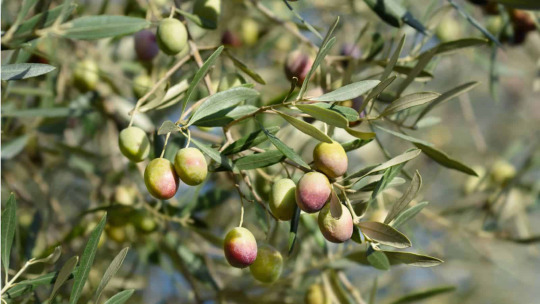
The Ewasi or olive is in many ways the center of Korithian cuisine, as it is also in Baalkes and Knosh. Olive oil is used regularly and the olive fruit is consumed at all meals of the day including dessert. Olives are cured via the use of water, vinegar, brines, or dry salt in order to remove their innate bitterness. There are hundreds of varieties of olive in Korithia alone, their taste dependent on when they are harvested, how they are cured, the particular cultivar, and even the soil in which they are grown. Kalmanati is best known for two varities of olive, the kalmi, which is red fleshed and meaty, typically cured in red wine vinegar, and the prasiki, a small green olive which is firm and slightly nutty in flavor.
Recipe
Take your favorite olives, put them in a bowl. Optionally add vinegar and herbs
Funemikiwados aka Hill Sauce
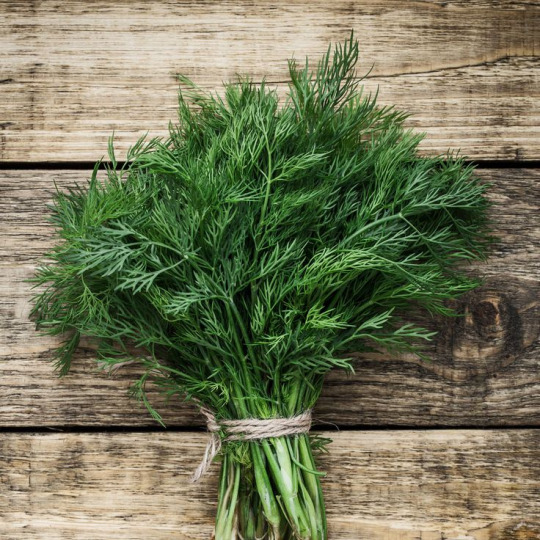
Hill sauce is the condiment of choice for most Korithian households and the exact nature of the sauce will vary greatly from region to region. In the north it is most often composed of pine nuts, olive oil, onion, vinegar, salt, and garlic. In the south the sauce is typically far more marine in nature, composed of seaweed, fish, garlic, olive oil, and vinegar. In all cases the ingredients are combined and mashed or ground to produce a pourable/dipable sauce. The sauce itself originates from the center of Korithia around the city of Bokakolis. The sauce was originally used by shepherds to flavor dried meats which may otherwise be dry or flavorless. Its name derives from the ingredients used within these early versions of the sauce, many of which were herbs plucked from the hillside while the shepherds tended to their flocks. The Kalmanatian version of the sauce is similar to this original herb based variety however it adds salt-cured fish and tisparos (Tisi - tickle, paros- seed) , another Kishite import (there it is called lisiki). This sauce is often used with practically any savory food, poured on meat, fish, vegetables, and bread. Often a house may be judged by the quality of their funemikiwados. Among the Kalmanatians there is two varieties of the sauce, a fresh version (the one described here) and another which is typically made with dried herbs and has additional vinegar added to act as a sort of preservative.
Recipe
1/2 cup extra virgin olive oil
1/3 cup red wine vinegar
2 tbsps rilogabo juice (1:1 orange and lemon)
2 anchovies (or other small salt-cured fish)
1/4 cup fresh chopped dill
1/6 cup fresh chopped parsley
1/8 cup fresh chopped thyme
6-10 leaves of fresh chopped rosemary
2-3 leaves fresh basil
2 cloves of garlic
Black pepper to taste
Ground tisparos to taste (Substitue ground sichuan pepper)
Gather the ingredients.
Combine and grind anchovies, garlic, and herbs into a fine paste, using a mortar and pestle or with a food processor.
Combine the herb paste ialong with the rest of the other ingredients and mix until completely incorporated.
Allow to sit at least 30 minutes, allowing for flavors to develop and properly incorporate with each other.
Serve with meat or fish
Wumos aka Wine

Wine in Korithia predates both the Korithians and the Arkodians, and had already been developed by several cultures on the islands including the Awaxi mentioned earlier. Wine is one of the most commonly consumed beverages, only surpassed by water, and slightly more common than psamarla, a Korithian version of unfiltered beer. Wine has many social, religious, and economic uses and is essential in the trade of the plantbrew, making up the base of many kinds of potion. There are many varieties of wine, with some being viewed as better or worse than others. Red wine is typically preferred for later in the day as it is believed that it helps to induce sleep while white wine is preferred for the morning and afternoon. Wine is typically watered down at a ratio of 2 parts water to 1 part wine, this may be either with plain or salted water. Unwatered wine is saved for special occasions and certain religious ceremonies in which intoxication is the goal. Wine may be sweetened with honey, figs, or various fruit juices. Herbs and spices such as black pepper, tisparos, coriander, saffron, thyme, and even cannabis and opium and various magical herbs may be added to change the flavor of the wine and to promote other effects.
Recipe
Pick a wine that you like and put it in a glass or cup. You can water it down if you would like but I didn't because I am not Korithian and this was a special occasion.
I finally got this post done! If you decided to read through this whole thing, thank you! Let me know if you try any of these, most of these amounts are ultimately a matter of taste, you can change things and experiment if you want.
Now we'll see if I get to 300 followers and we'll do this all over again with the food from another part of the Green Sea.
Thank you all again for following me, I've really enjoyed sharing my WIP with y'all!
@patternwelded-quill , @skyderman , @flaneurarbiter , @jclibanwrites , @alnaperera, @rhokisb, @blackblooms , @lord-nichron , @kosmic-kore , @friendlyshaped , @axl-ul , @talesfromtheunknowable , @wylanzahn , @dyrewrites , @foragedbonesblog , @kaylinalexanderbooks , @mk-writes-stuff , @roach-pizza
#fantasy food#writeblr#writing#worldbuilding#fantasy#testamentsofthegreensea#fantasy writing#world building#creative writing#story writing#200 followers#thank you guys so much!#fantasy world
87 notes
·
View notes
Text
🥯
#feeling like a social media influencer with my pumpkin spice coffee-infused steelcut overnight oats for breakfast#we've got cinnamon and vanilla and flax seed and peanut butter and chocolate chips in this thing#regrettably the oats didn't quite soak like they needed to but I do like the flavor#oh and brown sugar and a bit of cream because I'm not an animal#(the recipe I was basing this off of said almond milk etc etc but like I'm listening to that)#(I may have got the liquid to oats ration wrong though...)#mine
2 notes
·
View notes
Link
0 notes
Link

healthy desserts recipes
Do you remember when you were a kid and you sat down for a slice of pie or went to the movies and ate a whole bag of popcorn? It just seemed to taste better then, didn’t it? When you were younger you didn’t even know what a calorie was, and the last thing you worried about was a chocolate bar ruining your diet. Over the years, as our youthful metabolism fades and body-image becomes an issue, we begin to “watch” what we eat. Worrying about the repercussions of sweets and desserts takes out all the fun of these temporary indulgences. When was the last time you had chocolate or your favorite baked treat without worrying about what it might do to your body? It is time to finally remember that priceless taste of something sweet without it being ruined by the thought of “dietary-failure”! Let’s dive in, but let’s also set some rules of engagement before your sweet-tooth gets the best of you!
Recipe Rules of Engagement
Do follow the recipesto “Spec” I know you’re probably a great baker, but because of the alterations to some recipes, it’s very important to follow the ingredients, cook times and amounts very carefully. Don’t over Indulge Yes, you can get too much of a good thing! Don’t take advantage and have dessert every single night of the week. Make these treats when you feel you need them most, or are hosting a gathering etc. Do “make room”foryour desserts While it’s not necessary for every time you want to indulge, I want you to make some “caloric-room” for these desserts. Remember, at the end of the day, if you take in more calories than you need, you will not lose weight that day – you won’t gain weight, but you won’t lose any either. With that said, sometimes you might want to ensure that you do one of your “Movement Sequencing” workouts that day just to account for the extra calories.
Other than you are good to go! Preheat that oven and get ready to eat like nobody’s watching :)
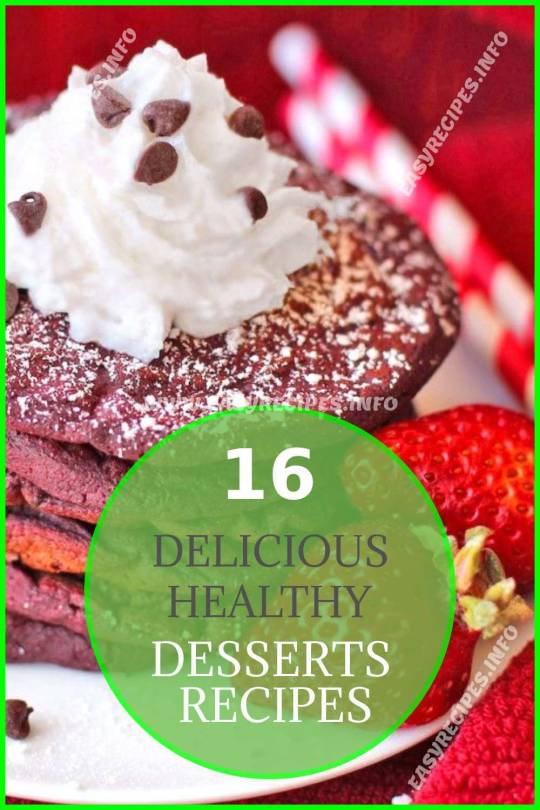
healthy desserts recipes
1. Lemon Brownies
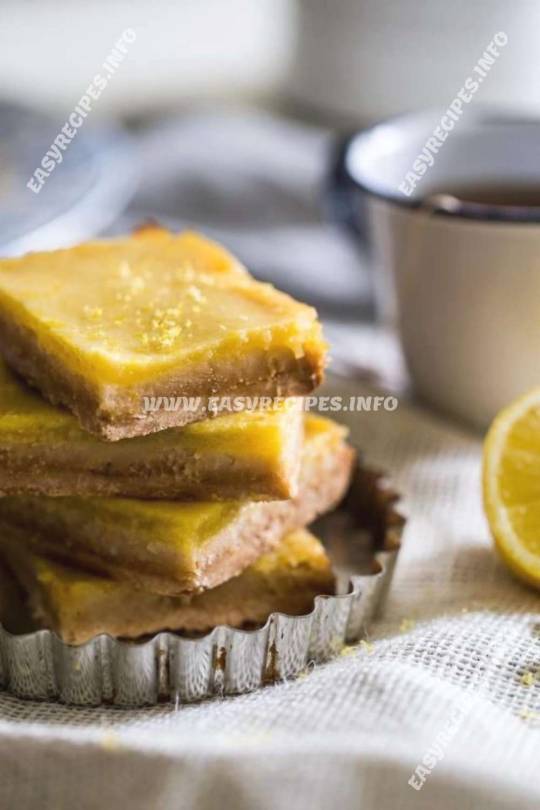
healthy desserts recipes
The classic lemon bars get a Paleo-friendly makeover! They're sweet, bright and so easy with only 5 ingredients! You'd never know these are healthy!
INGREDIENTS
For the crust:
1/4 Cup Honey
1/2 Cup Coconut Oil at room temperature - it should be the consistency of soft butter
1 pinch salt
1 Cup Coconut Flour sifted (95g)
For the lemon topping:
3 large Eggs
1/2 Cup Honey
2 tsps Lemon zest about 1 large lemon
2 tsps Coconut flour sifted
1/2 Cup Fresh* Lemon juice about 3 large lemons
INSTRUCTIONS
Preheat oven to 350F and grease baking pan. Beat together honey, coconut oil and salt then slowly add coconut flour until a doughy consistency is formed.
Pour mixture into pan and bake 30 minutes. Then whisk together eggs, honey and lemon zest. In a separate bowl, whish coconut flour into lemon juice 1 tsp at a time. Make sure you continually whisk. Pour lemon mixture into egg mixture while whisking.
Pour topping over top of cooled crust and bake until it sets. Cover and refrigerate at least 6 hours.
NOTES
Also try this 14 Simple Meal Plan to Lose Weight
Don’t forget to pin and save for later! 🙂

healthy desserts recipes
2. Sticky Strawberry Crumble
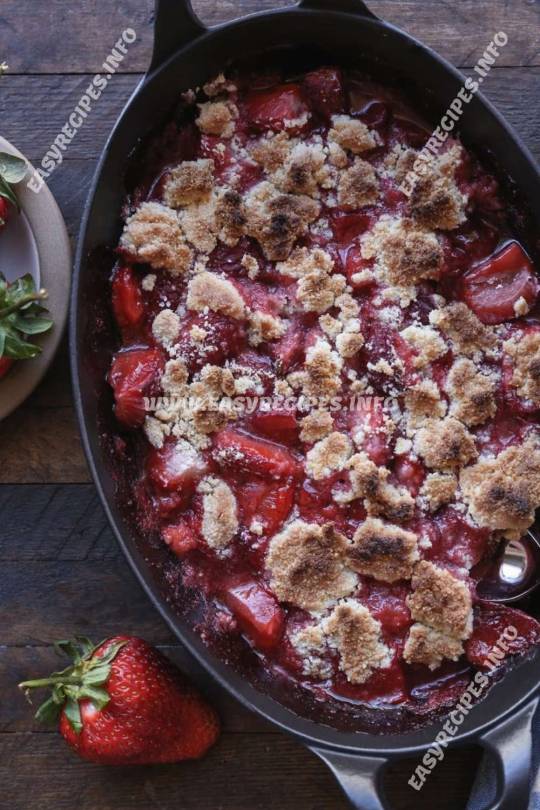
healthy desserts recipes
INGREDIENTS
Filling Ingredients
4 cups strawberries
2 tsp tapioca starch
2 tsp vanilla extract
2 tbsp lemon juice
Topping Ingredients
1 cup almond flour
½ teaspoon salt
2 tbs coconut oil
3 tbs pure maple syrup
INSTRUCTIONS
Preheat oven to 350F. Mix filling ingredients and transfer to baking pan.
Then mix the topping ingredients and evenly spread over the top.
Bake for 30 minutes.
Optional: Sprinkle unsweetened coconut flakes over the top.
Don’t forget to pin and save for later! 🙂
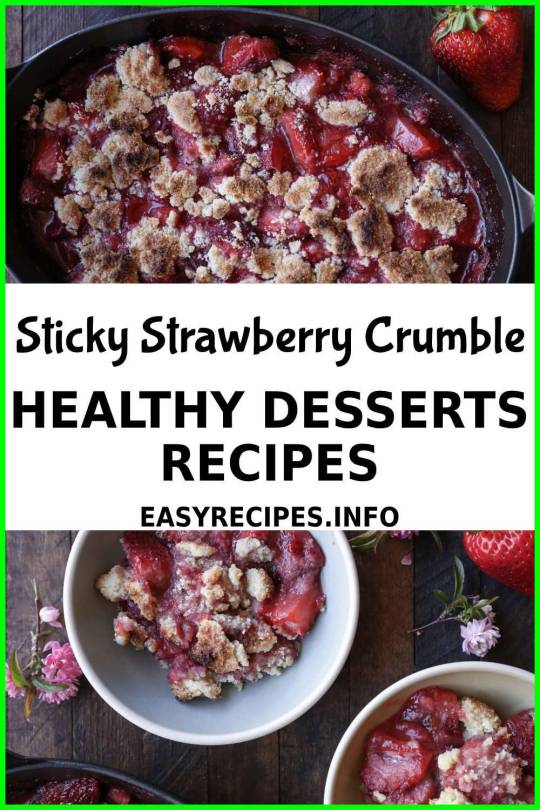
healthy desserts recipes
3. Chocolate Cake

healthy desserts recipes
INGREDIENTS
1 cup sesame flour or sesame meal
1/2 cup ground flaxseed
1/3 cup unsweetened cocoa powder
1 cup Splenda baking powder
1 teaspoon baking soda
1 teaspoon baking powder
1/2 teaspoon salt
1 teaspoon white vinegar
1 teaspoon pure vanilla extract
5 tablespoons sunflower oil
1/2 teaspoon liquid stevia
1 cup water
INSTRUCTIONS
Preheat your oven to 350 degrees F.
Line an 8 by 8 baking pan with parchment paper.
Whisk together the first 7 dry ingredients.
Make 3 depressions in the dry mixture, 2 small and 1 large.
Pour the vinegar in a small depression, the vanilla extract and chocolate stevia in the other small depression and the oil in the large depression.
Pour the water over the top and stir until smooth.
Spread the batter into the baking pan.
Place in the middle rack of your oven and bake for 30 minutes or until a toothpick in the center comes clean.
Allow to cool for 10 minutes then remove by holding the ends of the parchment paper.
Place onto a cutting board to frost then slice.
Don’t forget to pin and save for later! 🙂

healthy desserts recipes
4. Lemon Cashew Tarts
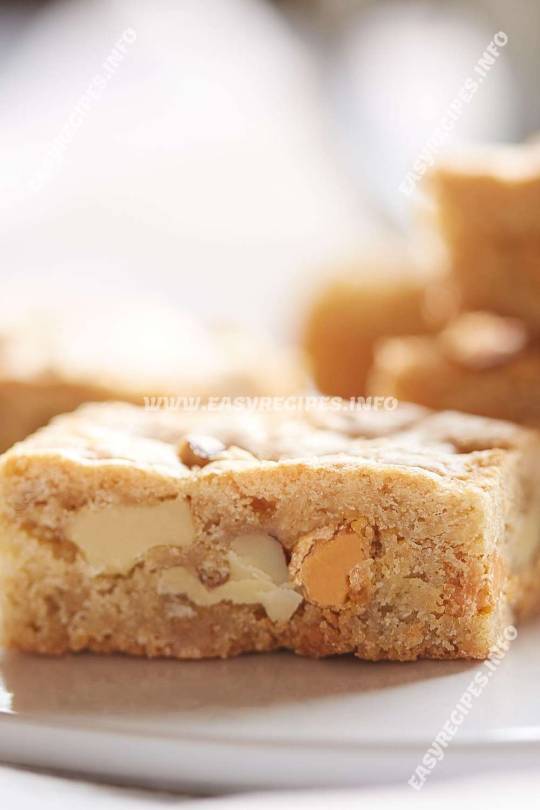
healthy desserts recipes
INGREDIENTS
Cream
1 cup cashews, soaked
1/4 cup filtered water
1/4 cup honey
1 teaspoon raw coconut oil
1 teaspoon vanilla extract
Juice form 1 lemon
Pinch Himalayan salt
Crust
1 cup almonds (or choice of nuts)
4 large dates, soaked
Pinch Himalayan salt
1 teaspoon vanilla extract
INSTRUCTIONS
Place the cashews in a bowl with lemon juice and soak overnight.
Drain and rinse with filtered water.
Process all cream ingredients in a food processor or mixer until smooth. Refrigerate for about an hour.
Mix all crust ingredients in a food processor until chunky. Remove and press into form of choice.
Pour cream on top of crust and garnish. Refrigerate for another two hours until firm.
Don’t forget to pin and save for later! 🙂
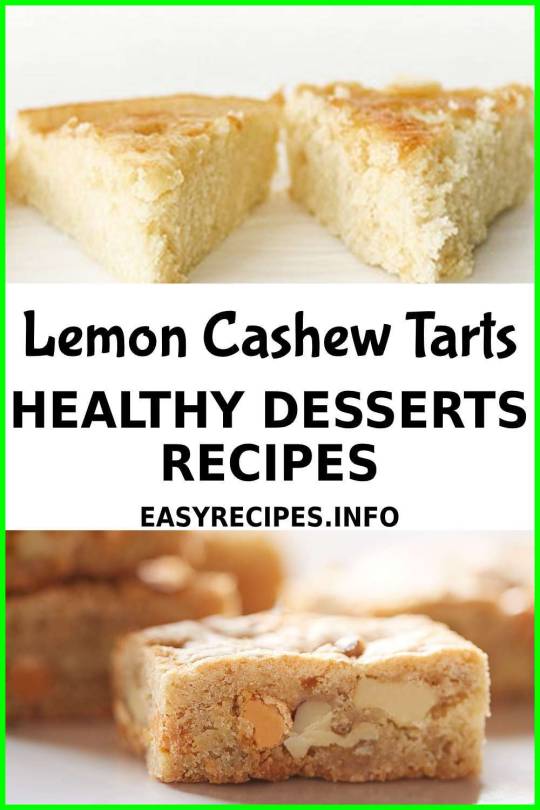
healthy desserts recipes
5. Raspberry and Coconut Glazed Donuts

healthy desserts recipes
INGREDIENTS
Donut Base
12 pitted dates
1 cup almond flour
1/2 cup coconut flour
1/4 cup coconut flakes
2 teaspoons stevia/Splenda baking “sugar”
1 teaspoon vanilla bean powder or vanilla extract
3 tbsp liquid stevia
Pink Glaze
2/3 cup raspberries
1/2 teaspoon vanilla bean powder or vanilla extract
1/3 cup coconut butter, softened
1/4 cup coconut milk
3 tablespoons liquid stevia
1 tablespoon lemon juice
Coconut flakes, for garnish
INSTRUCTIONS
Lightly grease a donut pan with coconut oil. Line a tray with parchment paper.
To make the donut base
Place the dates, almond flour, coconut flour, coconut flakes, stevia/Splenda baking “sugar” and vanilla bean powder in a food processor. Process until well combined. While the machine is running, pour the agave nectar in through the top, processing until the dough sticks together, approximately 15 seconds.
Divide the dough into 20 small pieces and firmly press
the pieces into the donut pan. If you don’t have a donut pan, shape the donuts and place them on the parchment-lined tray. Set in the refrigerator while you make the glaze.
To make the pink glaze
Place the raspberries, vanilla bean powder, coconut butter, coconut milk, agave nectar, and lemon juice in a blender and blend until smooth. Pour into a medium bowl.
To assemble
Remove the donuts from the pan by tracing the outside of the donuts with an offset spatula, gently lifting around the edges until they pop out. Working one at a time, place each donut in the glaze bowl so one side gets coated with glaze, then lift it from the bowl with a fork. Tap the fork against the rim of the bowl to allow excess glaze to drip off and place the donut, glaze side up, on the parchment-lined tray. Repeat until all the donuts are coated.
Sprinkle coconut flakes onto the wet donuts and refrigerate for 30 minutes or until the glaze hardens. Serve immediately or store in the refrigerator for up to 3 days.
Don’t forget to pin and save for later! 🙂

healthy desserts recipes
6. Raw Peppermint Oreos Dipped in Dark Chocolate
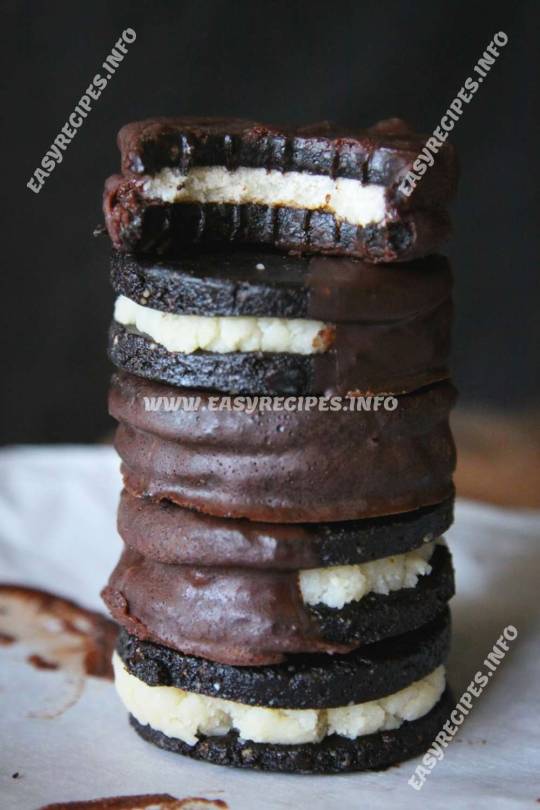
healthy desserts recipes
INGREDIENTS
For the Cookies
2/3 cup almonds
2/3 cup brazil nuts
1 cup dates
3 tablespoons carob powder
Pinch of sea salt
1-3 tablespoons water, if needed
For the Vanilla Creme
1 cup coconut chips
1 cup coconut shreds
2 tablespoons almond butter
2 tablespoons melted coconut oil
1/2 teaspoon vanilla powder
1-3 drops of peppermint essential oil, as desired
For the Dark Chocolate
1/2 cup coconut nectar or date paste
3/4 cup cacao powder or carob powder
1 tbsp stevia or sweetener
1/3 cup coconut oil or cacao butter, melted
INSTRUCTIONS
To make the cookies: grind the nuts into flour in a high-speed blender or food processor. Add the rest of the ingredients (except the water) to the nut flour in a food processor and process until it all sticks together in a ball. If it’s still too crumbly after a few minutes, add a little water. I did this and suddenly my very dry mixture became the perfect cookie dough consistency! Roll this dough out between two pieces of parchment paper then cut out cookies with a cookie cutter. Put them in the freezer until they are solid and can be handled without falling apart. If you have any extra dough, make a giant ‘ugly’ cookie and sprinkle it with some sea salt. No dough left behind.
To make the vanilla creme: blend all the ingredients together in a high speed blender, adding the peppermint oil to taste (it’s very potent!) If your blender isn’t powerful enough to blend everything into a thick, coconut butter-like mixture, then add some more coconut oil, and perhaps a liquid sweetener or some dates and water.
Sandwich the coconut creme with cookies, making little dollops on each cookie then gently pressing down another cookie on top. Throw in the freezer for another 30 minutes or until they are solid and very cold.
Mix chocolate ingredients, then pour it into a tall, narrow bowl and dip in your frozen cookies. You will have to have 2-3 rounds of dipping, letting the chocolate on the cookies harden after each time.
Enjoy!
Don’t forget to pin and save for later! 🙂

healthy desserts recipes
7. Peanut Butter & Chocolate Buttercream Cups

healthy desserts recipes
INGREDIENTS
1 cup dates
3/4 cup water
Juice from 1 lemon
1/4 cup cacao powder
2 tablespoon cashew butter
2 tablespoons coconut oil
2 tablespoons liquid stevia
1 teaspoon vanilla extract
a Pinch of salt
For the Outside
3 tablespoons coconut oil
3 tablespoons peanut butter
3 tablespoons tahini
INSTRUCTIONS
Blend all the ingredients until smooth.
Refrigerate overnight so it can develop those magical flavors, then spread evenly into your crust.
To Assemble
Stir the outside layer ingredients together in a bowl over steaming water until melted and combined.
Pour 1/3 of this into the bottoms of cupcake papers and try to get some around the sides.
Freeze until solid.
Pour a little more around the sides and freeze until solid again.
Fill with the butter cream then cover with the remaining nut/seed butter mixture.
Freeze for 10-30 minutes then GOBBLE
Don’t forget to pin and save for later! 🙂

healthy desserts recipes
8. Almond Butter Ice Cream with Chocolate Sauce

healthy desserts recipes
INGREDIENTS
For the Ice Cream
2 frozen bananas
1 can frozen coconut cream
1-2 heaping tablespoons almond butter
1 dash of almond or coconut milk
1 pinch cinnamon
1 pinch sea salt
For the Magic Chocolate Sauce
1/4 cup melted coconut oil
1/4 cup cacao powder
1/8 to 1/4 cup preferred liquid sweetener
1 pinch of cinnamon
1 pinch of vanilla
1 pinch unrefined sea sal
INSTRUCTIONS
To Make the Magic Sauce
Blend all your ingredients together until well combined.
Drizzle on top of your smoothies, ice cream or other treats.
To Make the Soft Serve
Blend all ingredients for your ice cream into your high speed blender until well-combined.
Pour a bit of the softy in some cups. Then add a layer of chocolate sauce and keep repeating the same process until the cups are full.
Finish with a layer of chocolate sauce and top up with your favorite toppings.
Don’t forget to pin and save for later! 🙂

healthy desserts recipes
9. Chocolate Chip Cookies
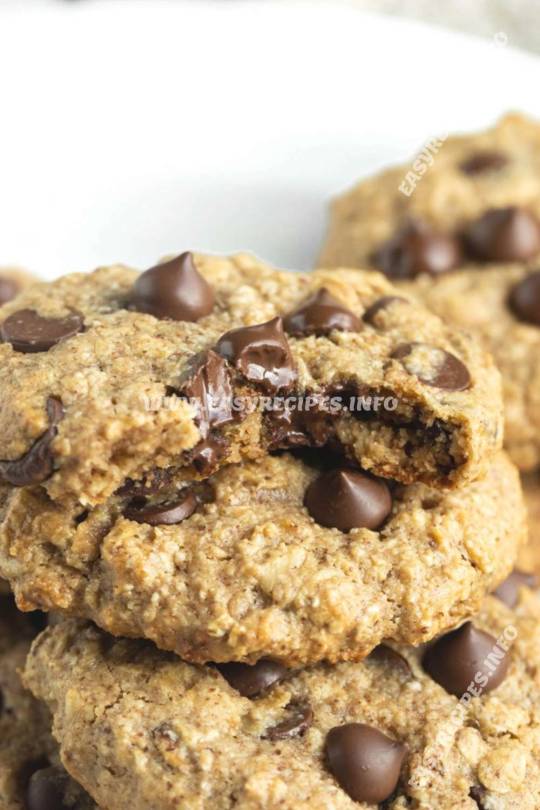
healthy desserts recipes
INGREDIENTS
2 1/2 cups blanched almond flour
1/2 teaspoon Celtic sea salt
1/2 teaspoon baking soda
1/2 cup grapeseed oil
3 tsp pure maple syrup
1 tablespoon vanilla extract
1/2 cup 80-100% dark chocolate chips
INSTRUCTIONS
Combine dry ingredients in a large bowl
Stir together wet ingredients in a smaller bowl
Mix wet ingredients into dry
Form 1/2 inch balls and press onto a parchment lined baking sheet
Bake at 350 degrees for 7-10 minutes
Cool and serve
Don’t forget to pin and save for later! 🙂

healthy desserts recipes
10. Banana Cookie Dough Almond Bites

healthy desserts recipes
INGREDIENTS
1 large ripe banana
1 cup almond meal
1/2 cup desiccated coconut
1/4 cup chopped walnuts
1 tsp vanilla essence
80-100% dark chocolate chips
INSTRUCTIONS
In a large bowl mash the banana with a fork until smooth.
Add the rest of the ingredients and mix until evenly combined and forms a dough.
Line a small baking tray with parchment or baking paper.
Take 1 tablespoon of the mixture and roll into a small cookie shape. Flatten with the back of a tablespoon or bottom of a glass.
Decorate with sliced almonds or chopped walnuts.
Freeze for 15 minutes then keep in the fridge in an airtight container.
Will keep for 3-4 days depending on the ripeness of the banana used.
Don’t forget to pin and save for later! 🙂

healthy desserts recipes
11. Crunchy-Punch Bars
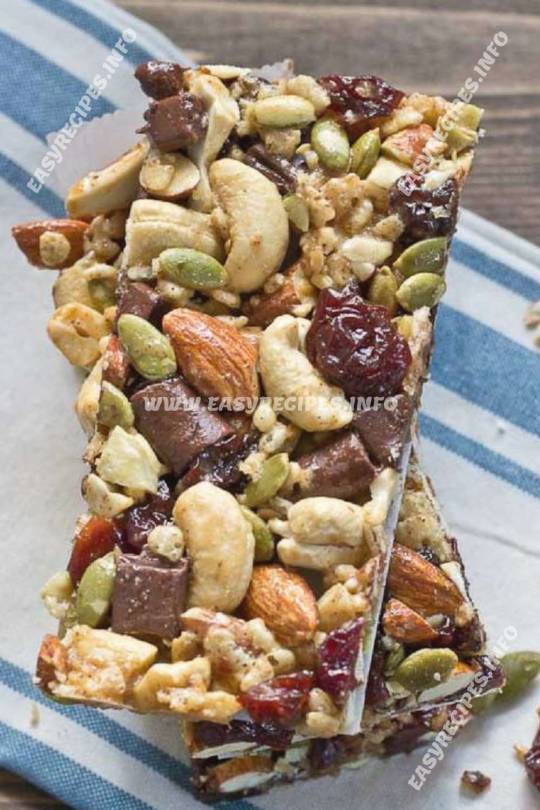
healthy desserts recipes
INGREDIENTS
1 cup almonds
1/2 cup peanuts
1/2 cup gluten-free brown rice (vegan, crisp cereal)
1/4 teaspoon salt
3 tsp pure maple syrup
INSTRUCTIONS
Preheat oven to 325°F. Line an 8-inch square baking pan with parchment paper. Set aside.
Add almonds, peanuts, cereal and salt to a large bowl. Stir until well mixed.
Pour maple syrup over this mixture. Fold until well incorporated.
Pour this mixture into the prepared baking pan. Using a rubber spatula, smooth into a tightly packed, even layer. Bake for 30-40 minutes. Bars must bake thoroughly, or they won’t hold together when cooled.
Allow to cool for 1 hour, or until completely cooled. Use a heatproof spatula to gently lift and loosen bars from parchment. Slice into 12 bars (6 rows by 2 columns).
Enjoy!
Don’t forget to pin and save for later! 🙂
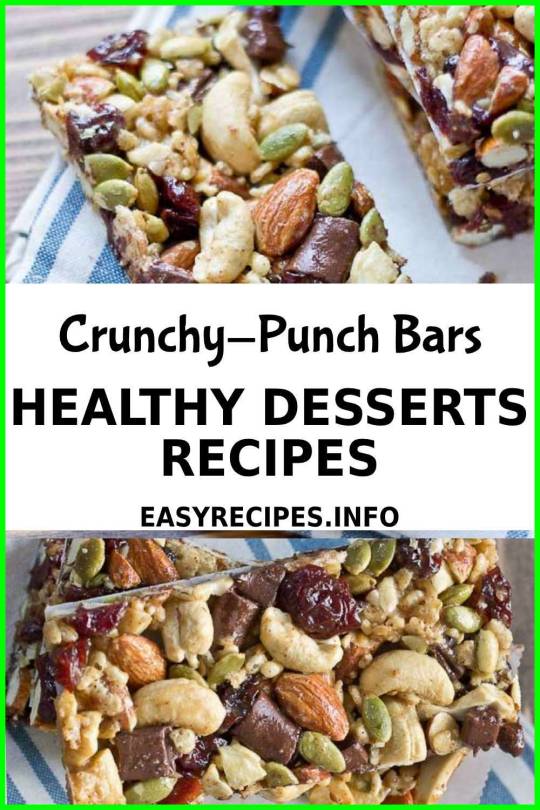
healthy desserts recipes
12. Blueberry Chia Pudding

healthy desserts recipes
INGREDIENTS
1 cup homemade almond milk
1/2 cup organic blueberries
2 tablespoons organic chia seeds
1/2 teaspoon organic vanilla bean powder
Stevia or sweetener to taste
INSTRUCTIONS
Add all ingredients to a 16 ounce mason jar and seal it very tightly.
Shake it vigorously until everything is mixed well and put it in the refrigerator for about an hour, or until it thickens to your preference.
Stir it up before serving and add additional blueberries on top, if you prefer.
Enjoy!
Don’t forget to pin and save for later! 🙂

healthy desserts recipes
13. Strawberry Pie

healthy desserts recipes
INGREDIENTS
3 tablespoons coconut oil
1 1/2 cups almond flour
3/4 teaspoon stevia (for crust)
1 tbsp stevia (for filling)
3 pounds strawberries
1 teaspoon lemon juice
2 tablespoons corn starch
INSTRUCTIONS
Crust
Heat oven to 350°. Put coconut oil in 8ʹ′ʹ′ pie pan and place in the oven while it is heating to melt the coconut oil.
Once the oil is melted take the pan out of the oven and add the almond flour and stevia to the pan.
Mix with a spoon until the dry ingredients are moistened.
Using the spoon (or your fingers) press the mixture down in the pan pushing some up along sides of pan.
Put in preheated oven and bake for 12 minutes or until lightly browned. Let cool before adding strawberry mixture.
Filling
Remove the hulls from all the strawberries and rinse well.
Puree 1 ½ pounds of the strawberries in a food processor.
Pour puree in a pan and begin to heat over medium heat.
Take your stevia stevia, add it as well as the lemon juice, to the puree. Then add the cornstarch and stir to mix thoroughly.
Continue to cook over medium heat while stirring for about 6-7 minutes or until mixture begins to thicken.
Let mixture cool for about 15-20 minutes.
Meanwhile cut the remaining strawberries into bitesized pieces.
Mix these in with the thickened strawberry puree.
Spoon the strawberry/puree mix into the cooled pie crust.
Don’t forget to pin and save for later! 🙂
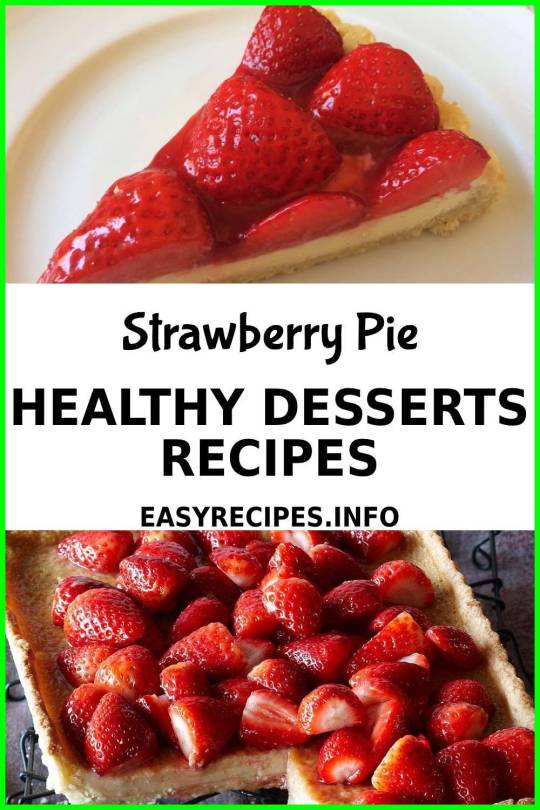
healthy desserts recipes
14. Animal Crackers

healthy desserts recipes
INGREDIENTS
1 cup – sunflower seeds
1/4 cup – flaxseed, ground
1/4 cup – coconut flakes
½ cup baking splenda
1 tablespoon – honey
1/8 teaspoon – salt
1 /4 cup – water
INSTRUCTIONS
Place shelled sunflower seeds in a food processor or blender.
Grind until it's the texture of coarse meal.
Place seed meal into a bowl and add remaining ingredients and stir with a spoon.
Chill in the fridge for 30 minutes.
Spoon batter onto wax paper.
Cover with wax paper and roll out with rolling pin until 1/4-1/8th inch thick. Cut out shapes.
Place shapes on greased cookie sheet.
Bake in 300 degrees oven for 15 minutes. Remove from oven and cool on wire rack.
Delicious served with sweetened yogurt.
Don’t forget to pin and save for later! 🙂

healthy desserts recipes
15. “Honey” Recipe
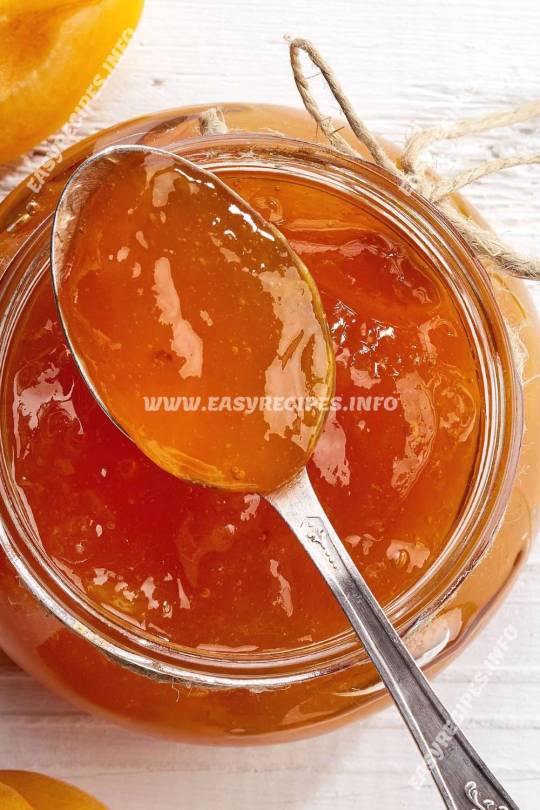
healthy desserts recipes
INGREDIENTS
1 cup cold filtered water divided
⅛ teaspoon xanthan gum
6 tablespoons stevia (powdered)
⅛ teaspoon mineral salt
2 teaspoons honey flavoring, optional
5 drops (or more) yellow food coloring, optional
INSTRUCTIONS
Mix ¼ cup cold water with xanthan gum.
Mix remaining water, sweetener, and salt together in a saucepan. Bring to a boil.
While whisking, mix in the xanthan gum water.
Stir constantly until it begins to thicken.
Remove from heat and add in honey flavoring and food coloring.
Mixture should thicken more as it cools.
Store in an airtight container in the fridge.
Don’t forget to pin and save for later! 🙂

healthy desserts recipes
16. “Maple-Syrup” Recipe
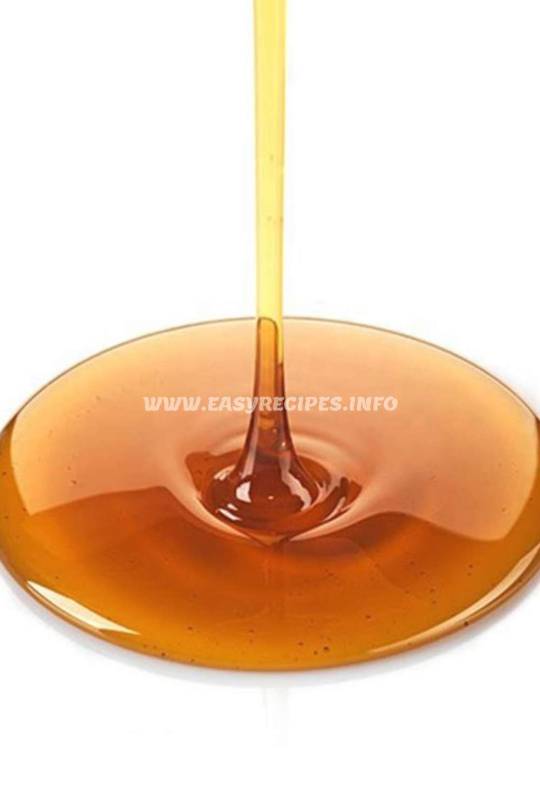
healthy desserts recipes
INGREDIENTS
3 cups Water
2 tsp Natural Maple Flavor
1¾ tsp liquid stevia
1 tsp Xanthan Gum
⅛ tsp Salt
INSTRUCTIONS
In a large blender add the water, maple flavor, and stevia.
Blend on low speed.
While the blender is running, remove the lid and slowly add the xanthan gum and salt.
Once everything is incorporated and completely smooth, pour into pretty serving jars, tightly seal, and refrigerate overnight.
Ready to use the next day! Refrigerate to store and shake before using.
Don’t forget to pin and save for later! 🙂
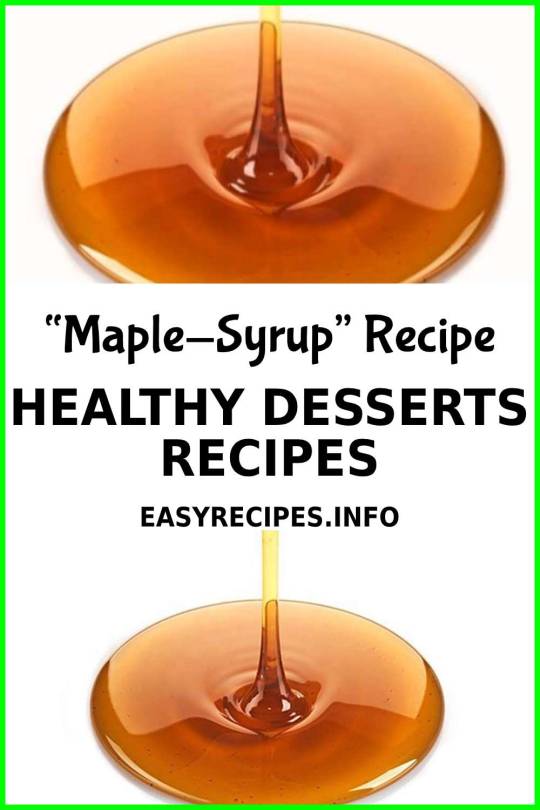
healthy desserts recipes
0 notes
Note
I have a weird question and I wish I was a troll but I'm really not. Any tips for a vegan who is allergic to most fruit, all kinds of nuts and almonds in ANY form (like lethally allergic) and also sensitive to anything soybased? i feel like I eat the same meal every day.
Well, I have severe (lethal) nut allergies, so I can empathize on that front. I’m assuming that you’re looking for milk and meat-replacement substitutes that are nut and soy free, first of all.
Even though I enjoy my soy milk as much as the next vegan with a nut allergy, my actual favorite is flax milk. This is becoming more widely available in larger chain supermarkets. It comes in plain unsweetened, original, vanilla, and a bunch of others. They also produce flaxmilk yogurt products as well, for when you have that craving. This company is free from any cross-contamination with any kind of nut as well. Outside of flax milk, there’s widely available rice milk and coconut milk, both free from nuts (the latter brand uses quality control measures to prevent cross-contamination, and I’ve never had a problem). I never really got to love the taste of coconut, but hey, some people really dig it! All of these have sweetened and unsweetened varieties (some of them have chocolate, added protein, etc.) but you have to figure out which one tastes the best to you! Yes, this might mean dumping a bunch of money into plant milks, but there’s worse things to spend your money on :)
Now I assume you want to discuss meat-replacement products, because those are also big offenders in the realm of nuts and soy. Fortunately, the vegan product seitan is made of wheat gluten and excludes soy and nuts. You can either purchase this product commercially (Uptons Naturals is my personal favorite) plain to cook into other products, or in a variety of flavors for many different types of dishes. Another meat replacement, said to mimic pulled pork or chicken, is jackfruit. This can be purchased either packaged and ready to cook, in cans, or depending on your location, the actual whole fruit (hopefully this is one fruit you aren’t allergic to). Each of these can be treated just like soy-based meat replacements in meals (and I personally love the texture of seitan more than most meat replacements, and leagues more than tofu). Once again, these products are also all nut-friendly.
Many people write off vegetables as adequate meat-replacement products, and they’re right; vegetables are simply not calorie-dense to a high enough degree to adequately fuel the average human being. However, for the occasional recipe, or just the feeling and flavor of a meat substitute, mushrooms and eggplants are some of the first go-to options. There are many other vegetables that can substitute for meat as well; it really depends on the seasoning. Get to know your spice cabinet well!
For other staples, I say worship beans and legumes. Vegans say it again and again, but it’s true. Get the large cans of chickpeas, great northern beans, cannellini beans, pinto beans, Lima beans, kidney beans, baked beans, navy beans, refried beans, broad beans, and more. They all have different textures and flavors, believe it or not, and you can read more about them here for ideas on what you can cook with them, or what to expect when you try to taste them. The links I’ve provided for the certain bean types include meals that you can make with that kind of bean, or a suitable vegan product including the bean in question. Beans replacing ground beef is a pretty common and easy substitute, especially in Mexican food (which is full of variety, if variety is what you’re looking for).
Other meal bases that don’t have soy or nuts include lentils, rice, quinoa, and pasta! Lentils come in many varieties, such as red, green, and brown, and each of them can be cooked in different types of dishes. Similarly, there are many types of rice, their flavors and qualities varying depending on which variety you choose and what type of dish you want to cook it in. Quinoa is becoming more widely available in common supermarkets, and cooks up to serve as a fantastic meal base, either chilled or warm! As for pasta, there are more than a dozen different shapes and styles of pasta, so depending on your mood, you can have any of these shapes or styles of pasta serve as the base for your meal. Noodles expand outside of just pasta, however, and there are ramen, rice, and udon noodles commonly used in Asian cooking that are vegan friendly as well.
A lot of vegans also seem to hoard nut-butters by the jar, so if you want to join that camp, feel free to try Sunbutter for a nut-free nut-butter alternative. Tahini, made from seasame seeds, can often give the same effect as nut-butter, and is used in the creation of hummus or other spreads. Depending on where you have available to shop, there are other nut-free nut-butter alternatives that are free from soy, such as spreads made from peas.
How about desserts? Well, I have you covered there too. For extremely allergen-friendly desserts, there’s Wink Desserts, which have an allergen-free ice-cream product made from peas. Still craving a heartier ice cream that is nut and soy free? Try rice-milk ice cream or coconut ice cream- both of them taste pretty good!
Divvies produces desserts that are nut free and vegan. Regarding soy, some of their products contain soy, some of them do not; be sure to check the ingredients before ordering. For a brand that is completely allergen friendly, check out Enjoy Life Foods, whose products are friendly to people afflicted from the top 8 allergens. From individual candies and treats, to baking necessities such as chocolate chips and baking chocolate, to allergen-friendly on-the-go bars, Enjoy Life Foods is a must-visit for any allergy sufferer or vegan! Since they have their own factory, there is no risk for cross-contamination of peanuts or tree nuts.
Many vegan desserts that are homemade require cashews for a creamy element, or a base made of crushed nuts, but I promise, there are recipes out there! All you have to do is google the product you want to make, and add in the words “vegan” and “nut free” following your dessert of choice. A perfect topping for a batch of vegan and nut-free brownies you make yourself is coconut whipped cream- yum!
As for your fruit allergy, since I don’t know specifically what fruits you are allergic to, my best advice is to continually rotate between the fruits that you are not effected by. There are so so so many fruits out there- it may be hard to find some that you enjoy very greatly that you are not allergic to, but fruit is not necessary to the foundation of a healthy, well-balanced vegan diet.
I feel as though the high variety of options provided above should give you a good idea of how to start so your meals have some variety. Mix and match all of the options described to create different meals time and time again. Regularly check out food blogs as well, or buy vegan cookbooks; very few meals are actually based around soy-based substitutes or nuts, as the focus is on whole-food staples, such as legumes, beans, and cereals.
Of course, please do not take my advice as that of a medical professional. I’m merely offering guidance on alternate sources to get similar/equivocal sources of calories and protein that satisfy the guidelines this ask presented me with.
This post is dedicated to anyone who is vegan with food allergies, and for all the carnist rhetoric they have to hear time and time again!
And to those people that claim vegans discriminate against people with allergies and intolerances, saying that they cannot become vegan- fuck off! We exist! We’re right here! Don’t use us in your petty excuses, especially when the only truth is you’re a lazy, sadistic asshole that values your tastebuds over the life of sentient creatures.
In addition to this being a baby-masterpost of soy-free and nut-free vegan living, please, if you’re a vegan with allergies, don’t hesitate to reach out! There are other vegans with allergies of all kinds and combinations out there to give you tips on how to live with a tasty and diverse plant-based diet. We support you and believe in you, because you’re doing something that’s hard enough without the threat of death at the back of your mind. Keep up the amazing work!
(Never forget that if you’re ever in doubt, speak with your primary care provider or a nutritionist to ensure that your diet is adequately providing the appropriate calories, macronutrients, and micronutrients, for your particular state of life)
-Admin Samantha
#admin S#vegan#veganism#allergies#nut allergies#food allergy#peanut free#soy free#vegans with allergies
58 notes
·
View notes
Text
The Old World Diet
Want to stop your constant fatigue, brain fog, feeling of being bloated? Want to start waking up early, jumping out of bed? Want to have more energy than you remember ever having? This diet can do that for you.
Growing up in France, food on the table used to always come well prepared - peeled, cooked until very soft, prepared at home. Many dishes were following traditional recipes that had been perfected over centuries. Since globalization had not quite happened yet, fruits and veggies were locally grown and only appeared when in season - and even then I wasn’t that big on them, I was nuts about nuts. Grass-fed red meat was consumed no more than once a week, and chicken was a delicacy, reserved for special occasions, freshly killed from the local farm. A pet peeve I developed was snack packages being left open - see, they would go stale within a couple days. No human ate corn really, it was known to be animals food. I can’t remember any exposure to soy, except in my teenage years when I started enjoying Asian food. And above all fresh baguette, pasta and other white wheat derivatives were the basis of our energy.
Since I was quite the rebel and had a tendency to question absolutely everything, especially when it came from my parents, I was very suspicious of the French countryside food traditions. For me a lot of that food selection and meticulous preparing was akin to old wives’ tales. Moving to the US in 2003, then in my early twenties, was a pivotal moment for my diet. I started following all these pseudo-health advices, eating a lot more varied fruits, vegetables and legumes. For the first time they came to me with skin on, partly cooked, sometimes raw, because see otherwise “you lose all the vitamins.” Any fruit could be obtained all year round, though it seemed quite tasteless. Meats were on the menu every day, especially chicken which was the cheap every day option.
Fast forward about 15 years and I had developed many debilitating health issues: massive fatigue and brain fog, blank memory, blurry vision, constant constipation. My brain felt just like a piece of plastic. I would find myself just sitting in my car in a daze. I would sometimes go a full week without going number two (it’s quite a terrible feeling). Most of the time I couldn’t gather any energy to exercise, feeling just knocked out. This made me doubt everything, even my mind - maybe I was just utterly depressed and it created all my health issues? But I realized over time that certain food didn’t make me feel good, although it was so hard to pinpoint which ones. I was supposed to be eating healthy food, following the nutrition advices of many well crafted science-backed blog posts. I had tried gluten free and other arbitrary subtraction diets for months at a time but nothing seemed to feel good past the first couple weeks of positive placebo effect.
Then one day I decided to try something: to forget about what is said to be healthy, and instead to go back to my childhood diet. Exit many fruits and all the obscure grains, legumes and veggies I never heard of before age 20. Shoot for high quality meats, and less often. Satisfy that craving for bread and pastries. Well almost immediately I regained energy. Within a few weeks I was feeling my normal self again, with most symptoms gone. Within a few months, my sharpness and energy reached unprecedented levels - my brain was like overclocked, I could visualize decades-gone events sharply by memory, and my high levels of energy felt almost scary.
This was not the happy ending quite yet. Since I did not really understand what was truly bad for me yet, I then went through many relapses for another 2-3 years. Often times I was pressured by others to eat “healthy”, or I would convince myself that maybe I wasn’t sensitive to some food anymore. Maybe I was just dealing with a lot of stress of early parenthood and could not quite make the food choices I wanted. But finally it came together in 2019 when I put together my experiences with the teachings from the Plan Paradox book. Although the book has its flaws and shoots in too many directions, the main teaching is that plants don’t just give food away to us for free - they absolutely defend themselves with the largest chemical arsenal known to mankind! It makes so much sense, and is why animals need to have a very specialized diet to be able to handle a narrow set of food - and why it can take them hours or days to properly digest things. But somehow humans are now believing that they can eat anything, any time, and keep on with our crazy active lifestyles. Coming up with my new diet, I thought a good description would be “Old World Diet” for bringing me back to what Europeans refined over centuries.

Whole grain food, or how to kill you GI
Principles and rules
What are some principles of a good diet?
Your body and mind should feel good at most times. You should start feeling better right away, there is no “die off” period during which “some dying bugs release chemicals” (the die off period is the most common excuse for bad diets).
Your weight should stay same or reduce, even though you are eating until full satisfaction.
Your GI should not hurt, feel bloated or constipated in any way. Regular daily bowel movements, typically in the morning.
The ideas of the diet can fit in a blog post, not a 700 page book.
Here are the main rules of the diet:
Stick to refined foods as much as possible. Refined doesn’t mean that you should go for chemicals - it means that the food was prepared in the “most evolved way” to make it the easiest to digest - shelled, peeled, deseeded, cooked until soft, etc.
Stay away from anything too sweet, especially fructose, which tricks your body into eating a lot of it. Many fruits are evolved to make you fat.
Stay away from anything known to be poisonous, or which may not be ripe for consumption. This seems obvious, but apparently not, look at all the potatoes.
What (bad stuff) you don’t eat is more important than what (good stuff) you eat. Stop harming yourself.
Supplements and vitamins are great. They are the way to bring back what was lost in processing - without the poisons.
You eat what the things you eat, ate.
The food list
With this in mind, the Old World Diet:
Main grains like wheat and rice are fine, but only in most refined form like white flour and white rice. Baguettes and other breading, white pasta is all good. Prefer bakery items that have risen by yeast (break up gluten) and are vitamin enriched. But stay away from whole grains! This includes most of corn based products, like corn flakes and most breakfast cereals. Also no to oats and other whole cereals found in most energy bars.
No legumes: anything soybean / soy based is off. Same for most bean and pea families. They are some surprise entries in this category, like peanuts and cashews (not nuts) which must be avoided.
Real nuts (shelled and peeled) are your friend. Best are pistachios, hazelnuts, and pecans. Almonds are fine but prefer peeled or as a flour.
Reduce meat consumption and shoot for highest quality like grass-fed beef and pasture raised chicken.
Fish and seafood should be your main protein, as long as wild caught to avoid corn feeding.
Milk should be A2 casein (coming from southern european cows). There are brands that promote A2 (like the A2 brand). But really, truly, just stay away from milk altogether if you can. It’s got enough calcium to build a cow, along with an overdose of vitamin D that increases its absorption. Hypercalcemia is a very debilitating condition. On the other hand, butter has little casein so is fine, but prefer yellow-colored European style butter.
Limit fruit consumption to only local, organic and very ripe fruit. Rule of thumb: it should smell very good. Still many fruit have high doses of fructose and are the surest way to become fat. Avocados are fruit, and although they don’t have the usual sugar, they personally make me feel really bad.
No nightshades! Potatoes, tomatoes, eggplant are off the menu. Maybe once in a while if peeled, deseeded, ripe and well cooked. Tomato paste may be ok.
Having a bit of regular sugar or maple syrup is fine, since they both have 50% or less fructose ratio. In general just avoid sugar and ban any fructose rich food (like honey).
For alcohol, the best is some clean white wine with lower sugars, like Sauvignon Blanc. Some red wine feels ok too, but it varies quite a bit based on skin content and amount of aging. Many beers seem to too much of the original lectins (the bad proteins attacking your gut) and are not aged long enough, so in doubt go for very clear Belgium-style ones. Overall the harder alcohols like whisky seem to be much easier to digest.
Overall it is close to the Plant Paradox diet, but with notable differences:
White wheat flour (with gluten) and white rice are fine really. Enjoy these delicious breads and pasta. That’s where you can draw most of your energy, and digesting them seem really easy once all of the gut-attacking substances are removed. Take the ones enriched with iron / thiamine / etc.
Avocados are not fine. Overall double check that the food is not banned in the FODMAP list.
White wine or champagne seems to go better than red wine, even with the need for sulfites.

A2 milk, so easy to digest. But really just ditch the milk.
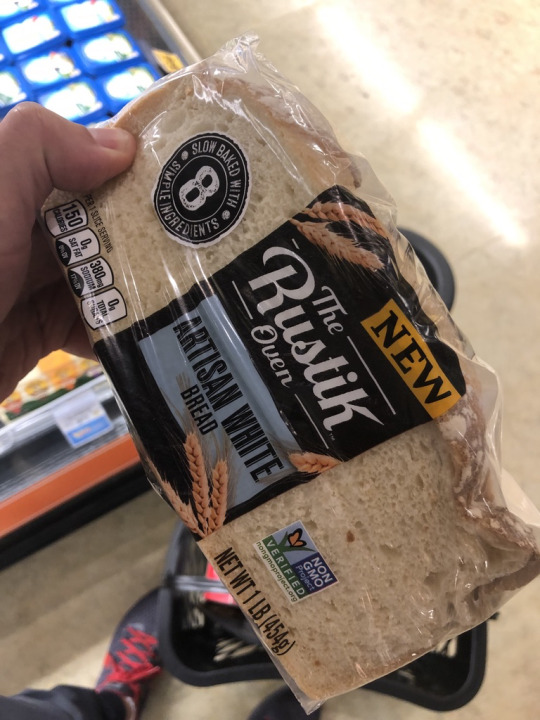
Great: traditional white bread, enriched with vitamins

Easy dinner: sardines on a brioche bun, with white wine
Trusting our history rather than pseudo-science
Fairly simple diet isn’t it? Personally I have been feeling amazing and lost quite a bit of weight after just a few weeks on it. GI is working like clockwork. This diet just brings you back to the most evolved food humanity was using before the health craze shifted us off track. What we are seeing really with all these bad “healthy” diets, is that modern science and medicine have become self-fulfilling. They are somehow telling us what healthy foods are (which they are not, besides for animals with specialized digestion that have plenty of time to digest them), which in turn make us sick in ways that are impossible for your body to fix (mostly auto-immune diseases, so your body IS the attacker) and finally we are given medications to fix ourselves (but they are just about reducing the inflammation and pain really). It’s time to stop this vicious pseudo-scientific cycle. Think about it - humanity mostly evolved by preparing their food better than animals, starting with the discovery of fire for cooking, which gave them their huge advantage over animals. It is time to enjoy the benefits of humanity’s experience and live a pain-free, energy-filled life.
1 note
·
View note
Text
Nutrition Basics for Fast Pain Relief (and Weight Loss)

1. Spend the first 30 days grain/wheat-free, dairy-free, and gluten-free.
a. That means no bread, no pasta, no milk, and obviously no cookies you Cookie Monster, you. And, of course, no added sugar (2 pieces of fruit is OK).
b. Restrictive? Yes.
c. Effective? Absolutely
2. Eat the following:
a. Meats/fish (fattier, grass-fed/wild-caught versions to nourish the body with clean, healthy fats and quality proteins)
b. Veggies (excluding starchy ones like corn, peas, and carrots)
c. Olive oil (for dressings, or to add post-cooking) (don't use for most cooking, since it goes bad under high heat)
d. Extra-virgin coconut oil (for medium/high heat cooking)
e. Eat until you are satisfied. Don't worry about eating too much - trust me, it's hard to overeat when you're chewing on nutrient-dense protein for example, as opposed to inhaling a red velvet cupcake
3. BIG ONE for pain relief: Avoid nightshades.
a. These include some fairly well-known veggies and spices that come from the Solanaceae family, such as:
i. Potatoes, eggplant, tomatoes, peppers, paprika, Tabasco sauce, and more (sweet potatoes and black pepper are not nightshades)
b. The steroid alkaloids (one of 4 alkaloids) in nightshades, which include solanine, are the main offenders.
c. They are naturally-produced toxic substances that help the plants defend against insects, diseases and other predators.
i. These are very similar to lectins binding to glucosamine and penetrating our cell walls, as discussed in Chapter 11.
d. These alkaloids are thought to cause calcium loss in the bones, and excess calcium deposits in soft tissue.
i. As a result, there may be a significant pro-inflammatory response in the body
e. To avoid this pro-inflammatory response, if you have osteoarthritis, rheumatoid arthritis, gout, or any form of joint pain, it is wise to cut these foods OUT for 30 days.
i. See how the body responds. Assess the damage (or lack thereof) and continue forward.
4. During the 30 days of this eating plan, you will be removing most food-based chemicals and allergens from your diet.
a. Many annoying health issues, including muscle and joint pain, aches, and stiffness, will seriously reduce significantly.
b. I'm not kidding, it's that simple. Food has a profound effect on pain, much more so than is commonly understood.
5. After the first 30 days, you can slowly experiment with adding foods back into your diet, and seeing how your body, skin, pain conditions, and mind react.
a. This process has been ESSENTIAL in helping me determine what I can and cannot eat for optimal health.
b. Only add in ONE FOOD per week. If you add more than 1 food and notice adverse reactions, you won't know which food is the troublesome one.
6. If you just can't fathom giving up regular milk, try Coconut and/or Almond Milk as an alternative (but no soy milk!).
a. Dairy is pro-inflammatory for many people but not so much for others. So, experiment with adding back it back into your diet after 30 days.
7. As for carbs: In the first 30 days, avoid them altogether (except for those from veggies and about 2 pieces of fruit).
a. After the 30 days, you can start experimenting with rice to see how joint pain and other health indicators (body fat, skin quality, etc.) respond.
b. Week by week, slowly add in other gluten-free, wheat-free carbs. Try sweet potatoes, quinoa, buckwheat, and millet.
c. You can try oatmeal and beans too, but they tend to be problematic unless properly soaked, sprouted and fermented.
d. Only if you are somewhat lean (under 20% body fat for men, 25% or so for women) AND training intensely, include white rice, sweet potatoes and/or yams during your post-workout meal. (For maximal pain reduction, though, I would still eliminate them for 30 days unless you absolutely cannot function without, due to your training load.)
Sound good?
Good.
Oh yeah, there's one more HUGE thing.
The Last and Most Important Points:
Adopting patience and acceptance
1. The lifestyle habits you've developed over the years got you to where you are right now.
True, we've been lied to by mass media and big corporations, but we've also played a part in our condition. It is what it is. Accept this and move on.
2. You now have a solution. It is up to you to implement it into your life. During this process, it will be difficult, but absolutely crucial to have dedication, discipline, and most importantly, patience.
To be completely honest, I spent 22 years eating junk, not exercising correctly, and not nourishing my body well. It would be ridiculous of me to simply expect the effects of this to all disappear overnight.
And you shouldn't either.
But, you are guaranteed to have lots of quick, early success including significant pain relief and much more.
These results will happen as long as the plan is followed correctly, at least 90% of the time (for example, no more than 2 cheat meals or 'screw-ups' at most per week, out of 21 total meals).
FYI, in regards to pain conditions, you will feel it after a cheat meal.
The rush of refined grains, unhealthy oils, and more take an immediate toll on promoting inflammation and joint pain. So, I would definitely try my best to eat as 'clean' as possible, even for cheats. Try some home cooked rice, butter, and chicken with some paleo brownies, as opposed to ordering a deep dish, Meat Lover's pizza.
With all this being said:
Beyond the early successes, for most people, there is more work to be done in pursuit of the body, mind, and life you want. Practice acceptance, have dedication, and give it time.
And moving on, read the '6 Weeks to Lean' Exercise Guide, which includes a quite detailed section of reducing pain through foam rolling (self-myofascial release) and stretching.
So if you're not quite in workout-ready shape yet, you can at least get a jumpstart on relieving pain and feeling better!
Interested in losing weight? Then click below to see the exact steps I took to lose weight and keep it off for good...
Read the previous article about "How To Lose Weight Fast If You're in Chronic Pain"
Read the next article about "How To Track Results (And Not Fall Into the Trap That Ruins 95% of Well-Thought Out Diets)"
Moving forward, there are several other articles/topics I'll share so you can lose weight even faster, and feel great doing it.
Below is a list of these topics and you can use this Table of Contents to jump to the part that interests you the most.
Topic 1: How I Lost 30 Pounds In 90 Days - And How You Can Too
Topic 2: How I Lost Weight By Not Following The Mainstream Media And Health Guru's Advice - Why The Health Industry Is Broken And How We Can Fix It
Topic 3: The #1 Ridiculous Diet Myth Pushed By 95% Of Doctors And "experts" That Is Keeping You From The Body Of Your Dreams
Topic 4: The Dangers of Low-Carb and Other "No Calorie Counting" Diets
Topic 5: Why Red Meat May Be Good For You And Eggs Won't Kill You
Topic 6: Two Critical Hormones That Are Quietly Making Americans Sicker and Heavier Than Ever Before
Topic 7: Everything Popular Is Wrong: The Real Key To Long-Term Weight Loss
Topic 8: Why That New Miracle Diet Isn't So Much of a Miracle After All (And Why You're Guaranteed To Hate Yourself On It Sooner or Later)
Topic 9: A Nutrition Crash Course To Build A Healthy Body and Happy Mind
Topic 10: How Much You Really Need To Eat For Steady Fat Loss (The Truth About Calories and Macronutrients)
Topic 11: The Easy Way To Determining Your Calorie Intake
Topic 12: Calculating A Weight Loss Deficit
Topic 13: How To Determine Your Optimal "Macros" (And How The Skinny On The 3-Phase Extreme Fat Loss Formula)
Topic 14: Two Dangerous "Invisible Thorn" Foods Masquerading as "Heart Healthy Super Nutrients"
Topic 15: The Truth About Whole Grains And Beans: What Traditional Cultures Know About These So-called "Healthy Foods" That Most Americans Don't
Topic 16: The Inflammation-Reducing, Immune-Fortifying Secret of All Long-Living Cultures (This 3-Step Process Can Reduce Chronic Pain and Heal Your Gut in Less Than 24 Hours)
Topic 17: The Foolproof Immune-enhancing Plan That Cleanses And Purifies Your Body, While "patching Up" Holes, Gaps, And Inefficiencies In Your Digestive System (And How To Do It Without Wasting $10+ Per "meal" On Ridiculous Juice Cleanses)
Topic 18: The Great Soy Myth (and The Truth About Soy in Eastern Asia)
Topic 19: How Chemicals In Food Make Us Fat (Plus 10 Banned Chemicals Still in the U.S. Food Supply)
Topic 20: 10 Banned Chemicals Still in the U.S. Food Supply
Topic 21: How To Protect Yourself Against Chronic Inflammation (What Time Magazine Calls A "Secret Killer")
Topic 22: The Truth About Buying Organic: Secrets The Health Food Industry Doesn't Want You To Know
Topic 23: Choosing High Quality Foods
Topic 24: A Recipe For Rapid Aging: The "Hidden" Compounds Stealing Your Youth, Minute by Minute
Topic 25: 7 Steps To Reduce AGEs and Slow Aging
Topic 26: The 10-second Trick That Can Slash Your Risk Of Cardiovascular Mortality By 37% (Most Traditional Cultures Have Done This For Centuries, But The Pharmaceutical Industry Would Be Up In Arms If More Modern-day Americans Knew About It)
Topic 27: How To Clean Up Your Liver and Vital Organs
Topic 28: The Simple Detox 'Cheat Sheet': How To Easily and Properly Cleanse, Nourish, and Rid Your Body of Dangerous Toxins (and Build a Lean Well-Oiled "Machine" in the Process)
Topic 29: How To Deal With the "Stress Hormone" Before It Deals With You
Topic 30: 7 Common Sense Ways to Have Uncommon Peace of Mind (or How To Stop Your "Stress Hormone" In Its Tracks)
Topic 31: How To Sleep Like A Baby (And Wake Up Feeling Like A Boss)
Topic 32: The 8-step Formula That Finally "fixes" Years Of Poor Sleep, Including Trouble Falling Asleep, Staying Asleep, And Waking Up Rested (If You Ever Find Yourself Hitting The Snooze Every Morning Or Dozing Off At Work, These Steps Will Change Your Life Forever)
Topic 33: For Even Better Leg Up And/or See Faster Results In Fixing Years Of Poor Sleep, Including Trouble Falling Asleep, Staying Asleep, And Waking Up Rested, Do The Following:
Topic 34: Solution To Overcoming Your Mental Barriers and Cultivating A Winner's Mentality
Topic 35: Part 1 of 4: Solution To Overcoming Your Mental Barriers and Cultivating A Winner's Mentality
Topic 36: Part 2 of 4: Solution To Overcoming Your Mental Barriers and Cultivating A Winner's Mentality
Topic 37: Part 3 of 4: Solution To Overcoming Your Mental Barriers and Cultivating A Winner's Mentality
Topic 38: Part 4 of 4: Solution To Overcoming Your Mental Barriers and Cultivating A Winner's Mentality
Topic 39: How To Beat Your Mental Roadblocks And Why It Can Be The Difference Between A Happy, Satisfying Life And A Sad, Fearful Existence (These Strategies Will Reduce Stress, Increase Productivity And Show You How To Fulfill All Your Dreams)
Topic 40: Maximum Fat Loss in Minimum Time: The Body Type Solution To Quick, Lasting Results
Topic 41: If You Want Maximum Results In Minimum Time You're Going To Have To Work Out (And Workout Hard, At That)
Topic 42: Food Planning For Maximum Fat Loss In Minimum Time
Topic 43: How To Lose Weight Fast If You're in Chronic Pain
Topic 44: Nutrition Basics for Fast Pain Relief (and Weight Loss)
Topic 45: How To Track Results (And Not Fall Into the Trap That Ruins 95% of Well-Thought Out Diets)
Topic 46: Advanced Fat Loss - Calorie Cycling, Carb Cycling and Intermittent Fasting
Topic 47: Advanced Fat Loss - Part I: Calorie Cycling
Topic 48: Advanced Fat Loss - Part II: Carb Cycling
Topic 49: Advanced Fat Loss - Part III: Intermittent Fasting
Topic 50: Putting It All Together
Learn more by visiting our website here: invigoratenow.com
0 notes
Text
Indian Masala Chai • The Blonde Abroad
Jennifer Kanikula of The SoFull Traveler is here today bringing a tasty Indian drink to the ‘Recipes Around the World‘ series!
After traveling in India for five weeks and drinking multiple cups of chai daily, it’s hard to imagine my life without a good cup of Indian Masala Chai.
I had my first cup of chai while visiting a friend in Pune, India. It only took a few sips before I realized this would be a staple in my Indian diet. Thankfully, chai is undoubtedly India’s most popular drink and is readily available at almost every street corner.
I had the opportunity to take an Indian cooking class where I requested to learn the basics of what made a high-quality masala chai.
My instructor, a spice master, had a combination of various spices that created his unique masala blend. However, this mixture is only available in his shop.
While I was able to purchase this and take a small amount home with me, this wasn’t a sustainable source for continuing my chai obsession. So, I decided to dissect this mixture, spice by spice, to determine the perfect ratio of ingredients to create what I consider the perfect cup of Indian masala chai.
Here’s the recipe for how to make Indian Masala Chai at home!
Cultural Context
First and foremost, it’s important to discuss exactly what masala chai is.
The word masala is a general term used for any number of spice combinations used in Indian cooking. And the word chai is Hindi for “tea.” So, when broken down, a masala chai is essentially spicy tea. Often in the western world, we hear of people drinking “chai tea” which is grammatically silly as it translates to “tea tea.”
So, with that said, a spicy tea can mean different things to different people. Hence why in India, a cup of masala chai will vary from place to place.
In general, though, the foundation for a cup of masala chai includes water, milk, black tea, spices, and sugar. The spice component can be as simple as fresh ginger or as inclusive as six different spices.
Regardless of the variations, chai is equally adored across all of India. It can be found on almost every street corner, where crowds gather to sip and enjoy conversation. It’s a welcoming gift in homes when new guests arrive. It’s the reason to pause at any moment and take a break from the busyness of life.
It’s so much more than just a cup of tea, it’s an integral part of life in India.
Ingredients
Serving Size: 2 cups
Prep time: 5 Min Cooking time: 7 Min
1 cup of water
1 cup milk (Whole milk for best results)
2 Tsp Black Tea
1/4 Tsp Ground Cardamom
1/8 Tsp Ground Black Pepper
1/2 Tsp Ground Cinnamon
1/4 Tsp Ground Cloves
3 Tsp Fresh Ginger (grated, skin on)
4 Tsp Sugar
Recipe + Preparation
Combine 1 cup of water with black tea and all ground spices
Bring mixture to a boil once. Once boiling, reduce heat/remove from the stove.
Add 1 cup of milk.
Bring mixture to a boil again. Once boiling, remove from heat, reduce to a simmer.
Repeat this process to bring mixture to a boil three more times.
After the mixture has boiled for a total of four times, add sugar and bring to a boil once more.
After a total of five boils, your mixture is done.
Pour the mix through a mesh tea strainer/cheesecloth to separate tea particles and spices from liquid mixture. Serve while hot.
Tips and Tricks
Different kinds of milk can be used for this recipe. However, the higher the milk fat, the creamier the product. Therefore, I recommend whole milk (but 2% will also work).
Milk alternatives like almond milk and soy milk can also be used. If you are going this route, pay attention to whether or not the milk is sweetened. If it is, you will need less sugar at the end. If it’s unsweetened, keep the sugar amount the same.
I use fresh ginger in this recipe. When using fresh ginger, there’s no need to bother with taking the skin off. Additionally, grating the ginger yields more flavor than slicing it. Dry, ground ginger can also be used but much less will be needed. Adjust per your taste preferences
I recommend using ground spices. In general, ground spices yield the best flavor in liquid bases (like this recipe) while whole spices are better in a hot oil base.
I use regular sugar in this recipe as this is what’s used in India. Other sugar alternatives can be used (honey, agave, etc). If you’re choosing to use one of these sugar alternatives, I would add them at the very end per your taste preferences.
Any kind of black tea will work. This recipe uses loose leaf tea but you can also use tea bags or cut open tea bags and pour out the leaves.
Final Thoughts
If you don’t have all the spices listed here or have a strong aversion to anything in the recipe, don’t fret, make your chai your own.
Increase the amounts of the spices you do enjoy and eliminate the ones you don’t. After all, masala just means a blend of spices so there’s no right or wrong.
Go on now, give it a chai!
youtube
Want to find other delicious foods from around the world to make? Check out these recipes!
Source link
قالب وردپرس
from World Wide News https://ift.tt/3c87MB9
0 notes
Text
Fluffy Pancakes
I first posted this pancake recipe it 2006, and figured it was time to elaborate a bit. It’s a recipe I use it a lot, resulting in a beautiful, classic stack of pancakes with impossibly tender crumb and golden edges. The pancakes have lightness and lift, and good color. That said, the real reason I love this recipe is because it’s endlessly adaptable. I’ve used it as a base pancake recipe and jumping off point for endless pancake adaptations and I heartily encourage you to do the same. You can experiment with a range of flours, liquids, and add-ins, and I list off a number of suggestions below.
Buttermilk, Yogurt, or Milk? – use what you’ve got!
You can make these pancakes with just about any liquid you have on hand. I’ve listed them in order of preference. Buttermilk is wonderful, but yogurt works like a dream too. Not everyone keeps buttermilk on hand, but many people have a cup of yogurt. Go for it! Thin Greek yogurt with an equal amount of water, so for this recipe I’d combine 1 cup + 2 tablespoons Greek Yogurt with the same amount of water. If you’re using a standard yogurt don’t bother thinning it.
Both of the above (buttermilk or yogurt) are A-plus choices. Don’t have other of those? Dairy milk, oat milk, and almond milk will all give you good results. When using one of these, allow the batter to sit for 5-10 minutes before cooking, allowing the batter to thicken a bit.
Experiment with Different Flours in Your Pancakes
I’ll start by saying, you can use all-purpose flour in these pancakes. But, by all means, experiment with more nutritious whole-grain flours if you have them (I have suggestions below and in the recipe). White whole wheat flour works wonderfully here. It’s the Trojan horse of whole-grain flours, because for finicky people who won’t eat anything brown or wholesome you can pass it off as white. It is made from a strain of hard white winter wheat berries and the nutritious bran and germ aren’t processed out the way they are in all-purpose white flour. The white whole wheat flour makes for a tender crumb.
Rye Pancakes: Replace about 1/2 of the all-purpose flour with rye flour.
Oatmeal Pancakes: Replace 1/3 cup of the flour with quick cooking oats or oatmeal you’ve blitzed int a blender. These are particularly good with slices of banana cooked in. Sprinkled with a bit of brown sugar in place of syrup.
Tiny Grain Pancakes: Stir 1/2 cup cooked quinoa or millet into your batter.
Blueberry Beet Pancakes (Vegan): If you’re looking for a colorful vegan pancake variation – hearty, substantial, delicious, and kid-friendly.
Variations From other Cooks
A number of you have left helpful comments for tweaks and variations to this recipe over the years and I wanted to list off a couple:
Lactose Intolerant: Jenny noted, “I just made these this morning for my lactose-intolerant twins, substituting the 2 1/4 C buttermilk for 1C soy milk. They were absolutely awesome! I ground 2 C wheat berries, which made 4C flour, and doubled the recipe for my large family.”
Lots of Bran: Rachael says, “I would really encourage you to try adding bran to your waffles or pancakes next time. I substitute up to half of my flour with bran (sometimes have to reduce the liquid a bit or add in something thicker, like yogurt, because the bran doesn’t absorb milk)… it lends a wonderfully nutty flavor to things and it lightens the texture substantially, not to mentioned the good-for-you fiber.
Extra Credit Fluffy
I’ve tweaked the recipe here to have you separate your eggs, and beat the whites into fluffy peaks. It’s an annoying step, and requires extra effort, but is arguably worth it. You fold the whites into your batter as a last step before cooking, and it adds a really nice lightness to the pancake batter. That said, if you’re not feeling up to it, no big deal – lightly beat the two eggs and add them to the liquid mixture.
Favorite Toppings for your Pancakes
Whole Blueberry Maple Syrup: This is my favorite syrup for these pancakes and worth the bit of extra effort to make. It’s delicious, fragrant and beautiful without being overly sweet. To make blueberry maple syrup put half of a 6-ounce basket of blueberries, 1/4 cup sugar, 1/4 cup maple syrup, and 2 tablespoons of water in a medium saucepan over medium-low heat. Heat and stir until the sugar dissolves. Simmer for 5 or 6 minutes or until the blueberries begin to split. Remove from heat and press the blueberry mixture through a fine strainer into a bowl. Mash the fruit to get all the juiciness extracted. Throw out the solids. Stir the remaining blueberries into the warm syrup and set aside. You can use whatever sugar you like here – white, brown, coconut sugar, etc.
Churro-style Cinnamon Sugar: Combine 2 tablespoons cinnamon with 1/2 cup sugar and stir well. Sprinkle generously across hot buttered pancakes. You can experiment with the sugar blend beyond this as well, adding a pinch of ground cloves or curry powder, and/or crushed rose petals.
Tasty Add-Ins
Berries: If you’re adding berries to your pancakes, add them to your pancakes after they’re on the griddle. This way your pancake batter retains its color.
Bananas: If you’re adding slices of banana to your pancakes, add them after the pancakes are on the griddle.
Boosts: Adding a boost of oat bran, wheat germ, nutritional yeast, kale or beet powder, hemp or flax seeds is always an option. I usually start with a tablespoon or two.
Some Cooking Tips
My pan of choice for pancakes is cast iron, but any pan that holds steady heat is fine. The key is getting and maintaining the right temperature. Too much heat and you end up with burned pancakes that are under-cooked in the middle. Too little heat, and they take forever to cook, and they end up with a bit dry with a toughened crumb. I tend to start at a lower temperature than I think I’ll want, and creep it up from there.
Keep Those Pancakes Warm!
Unless you have a griddle, or multiple pans going, you’re going to need make your pancakes in batches. And you don’t want your first round to go cold while you’re making the next. If you have a cooling rack you use for cookies, you can deploy it here. Place pancakes, preferably in a single layer, on the cooling rack after transferring from the skillet, and place them in a 200F oven to keep warm. I like the cooling rack better than a plate because it allows air to circulate around the entire pancake. This way, the bottom sides of the hot pancakes won’t get soggy.
Enjoy the pancakes! If you’re looking for breakfast recipes don’t miss this healthy granola, or the best waffle recipe (seriously!), these homemade cinnamon rolls, a loaded frittata, tofu scramble, Herb Cream Cheese Scrambled Eggs, and the baked oatmeal is always popular. Ooh – I also love this Cinnamon Vanilla Sunflower Butter on freshly baked toast.
!function(f,b,e,v,n,t,s) {if(f.fbq)return;n=f.fbq=function(){n.callMethod? n.callMethod.apply(n,arguments):n.queue.push(arguments)}; if(!f._fbq)f._fbq=n;n.push=n;n.loaded=!0;n.version='2.0'; n.queue=[];t=b.createElement(e);t.async=!0; t.src=v;s=b.getElementsByTagName(e)[0]; s.parentNode.insertBefore(t,s)}(window,document,'script', 'https://connect.facebook.net/en_US/fbevents.js'); fbq('init', '563725193994362'); fbq('track', 'PageView'); Source link
Tags: fluffy, Pancakes
from WordPress https://ift.tt/2zlrPyb via IFTTT
0 notes
Text
The Coronavirus Diet...according to the WFP
On March 23, the World Food Programme issued guidelines on the “do’s” and “dont’s” of eating while on quarantine.
Here are the 7 tips on keeping a healthy diet in the face of coronavirus…according to the WFP… and my personal take on each of them…
1. Hydrate, hydrate…
The body is made of about 75 percent water. The usual recommendation is eight glasses per day of fluid. As we are less active during lockdowns, and may not feel as thirsty, it is important to set regular reminders to ensure we are hydrating our bodies.
For flavour and additional nutrients, add slices of cucumber, lemon or orange to the humble glass of water. Avoid sweetened beverages such as soft drinks and soda because of high sugar content. If you want to know more about sweeteners, check the article posted on the 6th of December 2019 entitled “Food Additives To Avoid(Part 2/3: Sweeteners)”.
My take: As you can see we are back to basics (Level Zéro Maslow pyramid kind of basic) with what would easily hold number 1 spot in a moronic pamphlet called “Survival Tips for Dummies”. This first “tip” is such an obvious one that it makes me feel like nutritionists might not deserve the kind of praise, reverence and respect they currently do. Having said that, I would still commend the WFP for the gentle reminder…
2. GO foods
These foods are essential for energy, which is crucial for thinking, working, and fending off disease — think staples such as rice, pasta, bread and root crops. Choose things like wholegrain bread and mixed-grain rice, which release energy more slowly, fuelling you for longer and helping to maintain your weight.
My take: Wait…What??? Did I read this one right? This must be a joke…right? How on earth does shoving carb-rich staple foods while on quarantine (aka: not moving your butt for most of the day) help promoting healthy eating habits, let alone combating viral infections. Look, as much as I understand and even encourage safe social distancing during these unusual times (read “not making as many trips to the grocery store to buy fresh fruits and vegetables”) I don’t see how so called staple foods (most of them starchy) are going to help us fight this virus. Moreover, I was under the impression that this was going to provide all of us with an opportunity to hone our healthy cooking habits/skills…I don’t know about you but I don’t see how dropping a bag of rice in boiled water remotely ressembles the cookbook definition of a “recipe”… . All jokes aside, the only thing that these so-called staple foods are going to do is to spike your insulin without your body’s ability to metabolise/burn them, unless you are practising a moderately intense physical activity , in which case the integration of low GI starches into your diet does add value. Otherwise, please do yourself and your family a favour and stay away from high GI foods and focus instead on fresh/frozen low GI fruits and vegetables (the greener the better). Think spinach, asparagus, avocados, kale, zucchini, courgettes, etc… . We need to look for foods that are rich in essential vitamins and minerals…basically anything that can strengthen our immune system. Feel free to take supplements, especially vitamin D-3 as most of us are not getting as much sunshine as we normally would.
3. GROW foods
These help physical growth, especially for children. GROW foods rebuild your body when you are unwell or have an infection. They are often required in small amounts, but are essential to be consumed daily.
These include meat, fish, eggs, milk and other dairy products such as cheese and yoghurt. It’s worth buying UHT milk and other dairy products which have a long shelf life and freezing meat and fish.
Depending on the expiry date, eggs can be kept in the fridge for up to three weeks from the time of purchase. Eggs are a good source of low-fat protein and a range of vitamins.
Limit the consumption of canned meat because it is usually high in salt and fat. Canned tuna is a healthier alternative. Plant-based sources of proteins such as lentils and beans have a long shelf life, and are rich in vitamins and minerals. Rinse dry foods thoroughly before cooking.
My take: This third “tip” makes much more sense…even though I would caution against overdoing it on animal proteins, especially certain dairy products such as UHT Milk, yoghurts and cream cheese. Stick to harder cheeses such as gouda, emmental and cheddar as they contain lower lactose concentration. Try as much as you can to substitute cows milk with alternative milks such as almond milk or coconut milk, whether to make your morning latte or simply add some creaminess and flavour to your recipes. Also, try to avoid cold cuts such as ham, salami or carpaccio as they tend to be loaded with preservatives and additives.
4. GLOW foods
These make sure the body works well, help to protect the body from diseases and fight off illness. All foods have some vitamins and minerals, but colourful fruits and vegetables are generally rich in vitamins and antioxidants.
Build a colourful plate with:
Green fruits and vegetables: broccoli, spinach, cabbage, lettuce, Brussels sprouts, green beans, cucumbers, zucchini, peas, green pepper, green apples, kiwi, green grapes, lime, avocado.
Orange and yellow fruits and vegetables: carrots, pumpkin, sweet corn, sweet potato, yellow pepper, yellow tomatoes, yellow apples, apricots, oranges, grapefruit, peaches, mangoes, papaya, pears, pineapple.
Red fruits and vegetables: tomatoes, radishes, red cabbage, beets, red grapes, strawberries, watermelon, cherries, raspberries, pomegranates, cranberries, red apples.
Blue and purple fruits and vegetables: eggplant, purple cabbage, purple potatoes, blackberries, blueberries, purple grapes, plums, raisins, figs.
Preserved fruits and vegetables: whether canned, frozen, dried or fermented/pickled, these are a great alternative source when fresh fruits and vegetables are difficult to find due to seasonality or if they cannot be bought daily.
My take: Once again, the WFP almost hit it on the nail with this fourth tip. With the exception of preserved fruits and vegetables and certain high GI fruits such as pineapple, papaya, mangoes(any tropical fruits really) and sweet corn(aka “GMO in a piece of food”), this colour-coded list of fruits and vegetables is spot one. Try to privilege green vegetables(at least 50% of your plate) and complete your plate with the remaining colours.
5. Fortified foods and supplements
Depending on your situation, fortified foods and supplements may be required or combined with meals to supply required nutrients, especially in contexts where diets are of poor quality and limited quantity due to food insecurity.
My take: I am a bit confused with this one… . What does the WFP mean by food insecurity? Do they mean food scarcity due to supply chain instability and/or insecurity prone locations (as in human beings carrying loaded guns while grocery shopping … and potentially threatening other shoppers over a T-Roll). All jokes aside, if you live in such an insecure environment and feel like your life is at stake, it would indeed be a good idea to stock up on food with longer shelf life, whether fortified or not…just in case.
6. Exercise
Don’t forget to also squeeze in some physical activity! The World Health Organization recommends 30 minutes of physical activity a day for adults, and one hour a day for children. If allowed, go outside for a walk or a run, while keeping a safe distance from others. If you cannot leave the house, find an exercise video online, dance to music, do some yoga, or walk up and down the stairs.
My take: Why is exercise part of a list on tips on keeping a healthy “diet” under quarantine? Looks like the folks at the WFP haven’t looked up the definitions of “quarantine”… .Truth be told, exercise is a vital component of any human beings ability to physically and mentally sail through such uncertain times. Beyond the fact that we all come with varying degrees of “insanity" thresholds, whether programmed or triggered, the reported feeling of powerlessness in front of the forces of nature currently at play affects all of us on a deeper level, regardless of our age, race, status, educational background, income levels, etc…. Letting the steam off through exercise is therefore a good way to keep a balanced lifestyle…as long as you don’t put other people’s health and lives at risk.
7. NO foods — what to avoid
Foods that are high in fat, sugar and salt (heavily processed foods) are not considered part of a healthy diet. It’s particularly important at this moment to avoid these foods, as they do not provide any nutritional benefit.
My take: Really!? Did they really have to add such an obvious tip on the list. Looks like whoever started the list (hydration) received the honour of finishing it up with another “dummy”. In case some of you still have doubts, I am sorry to say that the jury (over 100 studies) has confirmed that any processed food is…definitely…unquestionably…ultimately…1000%…bad for you!!! Case closed.
There you go…the 7 tips on keeping a healthy diet in the face of coronavirus…according to the WFP… and my somewhat condescending take on each of them…for which I make no apology… . You can thank me once we are through this… .
Coming up next: The Actual Coronavirus…according to yours truly…
Until then…take care of you and your loved ones.
To Your Health
The Health Messenger
0 notes
Text
Should You Drink Coffee?
Hiya Gorgeous,
Do you feel perkier just thinking about sipping a delicious cup of coffee? Let’s be honest, for many people (myself included) that morning cup of joe is a treasured ritual. But, when one cup becomes two and then three and then another after lunch and so on… it might start to feel more like an addiction than a treat.
Don’t get me wrong, I’m not here to demonize your java. I love mine and I drink one cup in the morning, a few times per week. And for all you data lovers like me, there’s even some research showing that the benefits of coffee outweigh the risks (study)!
But if coffee has a tight grip on you and you experience caffeine withdrawal symptoms when you don’t drink it, there may be more downsides than upsides to this beverage for you. So, let’s talk about some of the health benefits of coffee as well as potential risks, and what you can do to reduce your intake and/or enjoy it in moderation.
Confused about #coffee? Find out how it impacts your #health + tips to help you reduce your consumption and enjoy it in a healthy way.
So, is coffee bad for you?
We’ll start by covering some of the main reasons coffee gets a bad rap, but before we do, I want to clarify one thing. Most coffee concerns crop up if you’re drinking more than two cups per day. I’m sharing info about the risks with you not to scare you away from coffee, but so you have the full picture. This way, you can make an informed decision about whether or not coffee is right for you. Plus, I know how you love taking charge of your health and learning about this stuff!
Coffee and Sleep Health
A good night of sleep, especially between 11 p.m. and 7 a.m. helps you heal, for real. Restful sleep activates your body’s own regenerative abilities—it’s the time when your body repairs and restores itself. But, coffee (because of its caffeine content) can be the enemy of restful sleep.
How long does caffeine stay in your system?
Caffeine has a half-life of about 5 hours. So if you consume 40 mg of caffeine at 3 p.m., you’ll still have 20 mg in your system when 8 p.m. rolls around. To give that some context, one 8-oz cup of coffee contains about 163 mg of caffeine (source), though levels can vary based on the brewing method.
One study measured sleep quality when people consumed 400 mg of caffeine (about the amount in a Venti Starbucks) at bedtime, 3 hours before bedtime and 6 hours before bedtime. All groups experienced a statistically significant reduction in sleep. So, even that mid-afternoon java break may be disrupting the restfulness and quality of your Zzzs.
Coffee and Adrenal Health
Caffeine triggers neurons in your brain that tell your adrenal glands to start producing adrenaline. This “fight or flight” response is perfect when you need to lift a car off of an injured person, but not if you’re sitting at your desk sorting through emails. When the adrenaline wears off, you’re left feeling wiped out, anxious and moody. Next stop? You guessed it! Off to dose up on more caffeine, sugar or other stimulants. It’s a vicious daily cycle.
This continuous roller coaster results in adrenal exhaustion. And when your adrenal glands are tired out, they can’t be as effective at their many jobs, which include:
Producing other essential hormones
Boosting your immune system
Regulating the health of your body tissues
Balancing blood sugars
Plus, regular coffee drinkers tend to need more and more caffeine over time to get the same adrenaline boost, which can lead to adrenal burnout.
Signs of adrenal burnout include:
Relentless fatigue
Constant low blood sugars
Depression
Allergies
Joint and muscle pain
Chronic infections
The good news is that adrenal exhaustion and burnout caused by too much caffeine can be remedied by eliminating excessive stimulants and stresses on the body. Hooray! So if you can stick to one or two cups of caffeinated coffee a day, you probably won’t experience the roller coaster—and you just might experience some benefits!
How Coffee Impacts Your Boobs and Bones
Listen up folks with tatas, this one’s for you. If you’re prone to breast cysts and/or a lean person with a family history of osteoporosis, you may want to stay away from too much coffee and other highly caffeinated drinks.
Caffeine tends to increase the tenderness and possibly also the lumpiness of fibrocystic breast tissue, making monthly self exams more difficult to do (study). See your gynecologist if you ever feel even the slightest unusual lump. And if it turns out to be a benign cyst, you may want to try reducing these lumps by taking evening primrose and vitamin E (I take about 1000 mg of evening primrose and 400 to 800 IUs of vitamin E). Of course, it’s always smart to talk to your docs about new supplements, so run this by them for good measure.
As for bone health, high coffee consumption (more than 3 cups per day) may decrease bone density in women, therefore increasing the risk for osteoporosis. This could be in part due to the decrease in calcium absorption and increase in urinary calcium that happens with caffeine consumption (study). If this is the case for you, you may want to peel back on the number of cups you’re drinking per day.
Supercharge your favorite meals with healthy, energizing ingredients! Get your free 10 Recipe Boosters Cheat Sheet:
The Health Benefits of Coffee
As I said earlier, coffee’s downfalls seem to have more to do with excess consumption than with the drink itself. If you can stick to one or two cups a day, you may reap some of the following benefits of coffee without negative side effects.
Moderate coffee consumption may:
Help prevent heart disease, a variety of cancers, type 2 diabetes and insulin resistance
Support healthy weight control
Prevent liver disorders (such as nonalcoholic fatty liver disease and cirrhosis)
Improve digestive issues (such as stomach ulcers and regularity)
Help prevent neurological conditions (such as Alzheimer’s, Parkinson’s, dementia, cognitive function and overall mental health)
Decrease overall mortality
Check out this resource for an overview of the benefits of coffee and links to several studies that support these claims.
Although it may be a relief to release the idea that your beloved coffee is a threat to your health, you may still want to pull back on the number of cups per day, especially if you’re exceeding two. So, here are some tips for keeping it cool with your favorite hot beverage…
6 Tips for Cutting Back on Coffee and Reducing Caffeine Withdrawal Symptoms
Start slow. Drastically reducing your consumption overnight can lead to headaches, crankiness, anxiety, exhaustion and even insomnia. Try cutting back by 2-4 oz per day over the course of a week or two, then see how you feel.
Drink a green juice before enjoying your cuppa! The more juice you drink, the fewer outside stimulants you’ll need to feel energized.
Try swapping those extra caffeinated cups with some decaf. Just be sure to choose water-processed (other decaffeinated coffees use a chemical process—yuck!).
Drink green or white tea after you’ve met your 2 cup-a-day coffee quota. The relatively small amount of caffeine in these drinks will definitely help you transition to a lower caffeine norm. Plus, tea is packed with good-for-you stuff like antioxidants, so sip away!
Try cacao (raw chocolate). It contains only trace amounts of caffeine. I love adding a tablespoon to my morning smoothie or some warm almond milk for a cup of hot cocoa.
Brew up something that mimics the taste of coffee. Teeccino or Dandy Blend are great herbal substitutes.
6 Tips for Enjoying Coffee in Moderation
Choose organic, shade-grown coffee because it requires little or no chemical fertilizer or pesticides to be grown.
Coffee can be dehydrating so make sure you’re drinking enough water if you’re going to enjoy moderate consumption. Divide your body weight in pounds by two to get the approximate amount of water in ounces that you need to drink per day (or divide your weight in kilograms by 30 to determine how many liters of water you need per day).
Stick to sippin’ during the first half of the day. As we discussed earlier, the caffeine from coffee can stay in your system for a long time and negatively affect your quality of sleep.
Cut the crap! Many coffee drinks are full of inflammatory stuff like dairy, added sugar and other additives. Choose nondairy milks and creamers when possible. Minimize the sugar or choose natural alternatives like stevia or erythritol (just make sure to adjust the amount as sugar alternatives are often much sweeter than the real thing!).
Bring your reusable cup/mug when you’re on the go. Those disposable coffee cups, straws, etc. add up to a lot of waste, especially when you’re using them on a regular basis. Savor your coffee the sustainable way!
Try a plant-based version of Bulletproof coffee for some extra healthy fats. You can read more about this popular coffee concoction in this article, but here’s the gist: “It involves making a clean, non-toxic coffee free of pesticides, herbicides, etc. and blending it with medium chain triglyceride (MCT) fats which increase energy and possibly performance, and are said to ward off hunger.” The original recipe includes butter, but it’s easy to make with vegan alternatives and still enjoy the benefits. Yum!
And my final tip: Listen to your body! It will tell you if coffee is something you can include in moderate amounts or not. If you don’t do well when you drink it, then consider that a message from your spectacular system. When in doubt, consult your doc. Cheers!
Your turn: What’s your relationship with coffee and how does it impact your overall well-being?
Peace & conscious coffee consumption,
The post Should You Drink Coffee? appeared first on KrisCarr.com.
0 notes
Text
Healthy Starbucks Mocha Frappuccino
Once you see how easy it is to make a rich and creamy Starbucks Mocha Frappuccino at home you’ll never miss the fat and calories you’re saving.
Coffee and chocolate are a flavor match made in heaven which is why it is no surprise that the Starbucks Mocha Frappuccino is so popular. Cool, creamy, rich and chocolately – what’s not to love?
Confession: I’ve never actually ordered a Frappuccino at Starbucks before. While there are many unhealthy foods I can’t resist, Frappuccinos fall into my “off limits” category which means I never order them.
The same can be said for a McDonald’s Big Mac, General Tso’s Chicken at a mall food court or a donuts from Dunkin’ Donuts.
It all goes back to my 80’s childhood during the fat-free craze followed by my overweight adolescence in the 90’s/00’s. I didn’t grow up eating these heavy foods so to eat them now would pretty much be a guaranteed stomach ache.
Psychologically, consuming them would immediately bring me to a dark place so for these reasons, I avoid them.
The fact is, I’ve worked too hard to achieve weight loss success and I’ve also learned a lot about making smarter food choices over the years. By using ingredients I can pronounce such as cocoa powder, half and half and strong coffee plus a few drops of my favorite chocolate stevia, I end up with a frothy, decadent frozen drink that is sheer perfection. If you don’t have liquid stevia, honey or pure maple syrup work just as well.
Your straw is waiting.
Frothy chocolate and coffee perfection - this healthy knock-off of the Starbucks mocha frappuccino has all the flavor, none of the guilt.
<![CDATA[.wprm-recipe-rating .wprm-rating-star.wprm-rating-star-full svg * fill: #ffffff; ]]> Print Pin Rate
Course: Drink
Cuisine: American
Keyword: frappuccino, healthy
Prep Time: 5 minutes
Total Time: 5 minutes
Servings: 2
Calories: 72kcal
Author: Liz DellaCroce
Ingredients
2 cups strong brewed coffee chilled
1/4 cup half and half or almond milk
2 tablespoons cocoa powder
1 tablespoon vanilla extract
14 drops chocolate stevia or sweetener of choice (ie honey,maple syrup, etc.)
1 pinch sea salt
ice
whipped cream and dark chocolate shavings optional garnish
Instructions
Combine coffee, half and half, cocoa powder, vanilla, stevia and salt in a blender. Puree until smooth about 30-60 seconds.
Add a scoop or two of ice and puree for additional 45-60 seconds on high.
Pour into a glass and garnish with whipped cream and dark chocolate shavings.
Notes
For a thicker consistency, add more ice. Stevia has no calories so if you swap with honey or another sweetener please note that the calorie total will increase a bit.
Nutrition Facts
Healthy Starbucks Mocha Frappuccino
Amount Per Serving
Calories 72 Calories from Fat 38
% Daily Value*
Total Fat 4.2g 6%
Saturated Fat 2.6g 13%
Polyunsaturated Fat 1.6g
Cholesterol 11mg 4%
Sodium 298mg 12%
Total Carbohydrates 6.8g 2%
Dietary Fiber 1.8g 7%
Sugars 2g
Protein 2.2g 4%
* Percent Daily Values are based on a 2000 calorie diet.
Recipe by The Lemon Bowl // Photography by Alejandro Photography
Want more delicious drink recipes? Check out my Pinterest board!
You May Also Like:
<![CDATA[ /* general yuzo style */ .yuzo_pro .relatedthumb cursor:pointer; .yuzo_pro overflow: hidden; padding: 10px 0; margin: 10px 0; width: 100%; display: block; /*float: left;*/ /*problem with other plugins*/ clear: both; .yuzo_pro .yuzo_clearfixed, .yuzo_widget_wrap .yuzo_clearfixedclear: both;display: block;margin: 5px 0; .yuzo_pro .text-center text-align:center;margin:0 auto;display:block; .yuzo_pro h3 margin-bottom: 0!important .yuzo_pro .relatedposts margin: 0 0 20px 0; float: left; font-size: 12px; .yuzo_pro .relatedposts h3 font-size: 20px; /*margin: 0 0 5px 0;*/ .yuzo_pro .relatedthumb margin: 0 1px 0 1px; float: left;line-height: 15px;text-align: left; /*padding: 5px;*/ .yuzo_pro .relatedthumb img margin: 0 0 3px 0; padding: 0; .yuzo_pro .relatedthumb a overflow: hidden; text-decoration: none; display:block; padding:0;background-image: none;background-color:transparent; .yuzo_pro .yuzo_text margin-top: 10px; display: block; .yuzo_pro .relatedthumb .yuzo-img-wrap margin-bottom: 4px; .yuzo_pro .yuzo__bf_textmargin:10px auto; .yuzo_pro .yuzo__title--centered text-align:center;display:block;margin:0 auto; #wp-admin-bar-admin_yuzo_views .yuzo_menu_bar_icons margin-left: 5px;width: 20px;height: 26px;background-image:url('https://thelemonbowl.com/wp-content/plugins/yuzo-pro/assets/images/fires3.png');background-repeat: no-repeat; position: absolute;top: 0;left: 0; #wp-admin-bar-admin_yuzo_views .ab-item position: relative; padding-left: 26px!important; #wp-admin-bar-admin_yuzo_views .yuzo_menu_bar_icons.color_normal background-position: -3px 5px; #wp-admin-bar-admin_yuzo_views .yuzo_menu_bar_icons.color_flare_hot background-position: -22px 5px; #wp-admin-bar-admin_yuzo_views .yuzo_menu_bar_icons.color_flare_hot2 background-position: -43px 5px; #wp-admin-bar-admin_yuzo_views .yuzo_menu_bar_icons.color_flare_hot3 background-position: -62px 5px; #wp-admin-bar-admin_yuzo_views .yuzo_menu_bar_icons.color_flare_hot4 background-position: -83px 5px; ]]><![CDATA[ /* theme standar style */ .yuzo_pro .relatedthumb.box_shadow_related .yuzo-img /*box-shadow: 1px 1px 3px rgba(227, 227, 227, 1);*/ box-shadow: 0 1px 4px rgba(0, 0, 0, 0.2) !important; ]]><![CDATA[ .yuzo_pro img width:47.6px !important; height:200px !important; .yuzo_pro .relatedthumb line-height:inherit;background:#ffffff; .yuzo_pro .relatedthumb:hover background:#FFFFD3 !important; -webkit-transition: background 0.2s linear; -moz-transition: background 0.2s linear; -o-transition: background 0.2s linear; transition: background 0.2s linear;;color:!important; .yuzo_pro .relatedthumb a color:!important;text-decoration:none;outline:none;border-bottom:0; .yuzo_pro .relatedthumb a:active,.yuzo_pro .relatedthumb a:focus,.yuzo_pro .relatedthumb a:-webkit-any-link color:!important;text-decoration:none;outline:none;border-bottom:0; .yuzo_pro .relatedthumb:hover a color:!important; .yuzo_pro .relatedthumb:hover .yuzo__text--title color:!important; .yuzo_pro .yuzo_text, .yuzo_pro .yuzo_views_post color:#919191!important; .yuzo_pro .relatedthumb:hover .yuzo_text, .yuzo_pro:hover .yuzo_views_post color:!important; .yuzo_pro .relatedthumb box-sizing: border-box; margin: 0% 1% 0% 0%!important; padding: 5px 5px 5px 5px; .yuzo_pro .relatedthumb .icon_middle_only_style_1 display:none; .yuzo_pro .relatedthumb .yuzo_meta margin:2px 2px 2px 2px;;font-size: 12px;color: #c4c4c4; text-align: left ; ;line-height:12px; .yuzo_pro .relatedthumb .yuzo_meta .yuzo_meta_view, .yuzo_pro .relatedthumb .yuzo_meta .yuzo_meta_date, .yuzo_pro .relatedthumb .yuzo_meta .yuzo_meta_category, .yuzo_pro .relatedthumb .yuzo_meta .yuzo_meta_author display:inline; margin:0 5px; .yuzo_pro .relatedthumb .yuzo_meta > div:nth-child(1) margin-left: 0!important; text-align: left; margin-right: 0!important; .yuzo_pro .relatedthumb .yuzo_meta .yuzo_meta_view:before content:''; font-family: 'Fontawesome'; font-size:13px;padding-right: 1px; .yuzo_pro .relatedthumb .yuzo_meta .yuzo_meta_date:before content:''; font-family: 'Fontawesome'; font-size:13px;padding-right: 1px; .yuzo_pro .relatedthumb .yuzo_meta .yuzo_meta_category:before content:''; font-family: 'Fontawesome'; font-size:13px;padding-right: 1px; .yuzo_pro .relatedthumb .yuzo_meta .yuzo_meta_author:before content:''; font-family: 'Fontawesome'; font-size:13px;padding-right: 1px; .yuzo_pro .relatedthumb .yuzo-img .yuzo_pro .relatedthumb:hover .yuzo-img -webkit-filter: brightness(1.5);filter: brightness(1.5); /* for widgets */ .yuzo_pro.ycolumns-widget .yuzo_pro.ycolumns-widget .relatedthumb /*width: 100%;*/ width:47.6px; .yuzo_pro .yuzo_wrapsmargin-top:5px; /* responsive */ .yuzo_pro.ycolumns-8 .relatedthumb width:47.6%; .yuzo_pro.ycolumns-7 .relatedthumb width:47.6%; .yuzo_pro.ycolumns-6 .relatedthumb width:47.6%; .yuzo_pro.ycolumns-5 .relatedthumb width:47.6%; .yuzo_pro.ycolumns-4 .relatedthumb width:47.6%; .yuzo_pro.ycolumns-3 .relatedthumb width:47.6%; .yuzo_pro.ycolumns-2 .relatedthumb width:47.6%; @media all and (max-width: 1170px) .yuzo_pro.ycolumns-8 .relatedthumb width: 18%!important; @media all and (max-width: 1024px) .yuzo_pro.ycolumns-8 .relatedthumb width: 23%!important; @media all and (max-width: 899px) .yuzo_pro.ycolumns-4 .relatedthumb width:47.6%; .yuzo_pro.ycolumns-8 .relatedthumb width: 23%!important; @media all and (max-width: 750px) .yuzo_pro.ycolumns-4 .relatedthumb width:47.6%; .yuzo_pro.ycolumns-5 .relatedthumb width:47.6%; .yuzo_pro.ycolumns-6 .relatedthumb width:47.6%; .yuzo_pro.ycolumns-7 .relatedthumb width:47.6%; .yuzo_pro.ycolumns-8 .relatedthumb width:22%!important; .yuzo_pro.ycolumns-5.yrows-1 .yuzo_wraps .relatedthumb:nth-child(5) display: none; @media all and (max-width: 700px) .yuzo_pro.ycolumns-8 .relatedthumb width:30%!important; @media all and (max-width: 550px) .yuzo_pro.ycolumns-3 .yuzo_wraps .relatedthumb, .yuzo_pro.ycolumns-4 .yuzo_wraps .relatedthumb width:48.6%; .yuzo_pro.ycolumns-3 .yuzo_wraps .relatedthumb .yuzo-img-wrap , .yuzo_pro.ycolumns-4 .yuzo_wraps .relatedthumb .yuzo-img-wrap, .yuzo_pro.ycolumns-3 .yuzo_wraps .relatedthumb .yuzo-img , .yuzo_pro.ycolumns-4 .yuzo_wraps .relatedthumb .yuzo-img , .yuzo_pro.ycolumns-5 .yuzo_wraps .relatedthumb .yuzo-img , .yuzo_pro.ycolumns-6 .yuzo_wraps .relatedthumb .yuzo-img , .yuzo_pro.ycolumns-7 .yuzo_wraps .relatedthumb .yuzo-img , .yuzo_pro.ycolumns-8 .yuzo_wraps .relatedthumb .yuzo-img /*height:160px!important;*/ /*height:100%!important;*/ .yuzo_pro.ycolumns-4 .yuzo_wraps .relatedthumb .yuzo-img-wrap height:100%!important; .yuzo_pro.ycolumns-4 .yuzo_wraps .relatedthumb height:250px!important; .yuzo_pro.ycolumns-4 .yuzo_wraps .relatedthumb .yuzo-img height: 180px!important; .yuzo_pro.ycolumns-8 .relatedthumb width:48.10%!important; @media all and (max-width: 420px) .yuzo_pro.ycolumns-3,.yuzo_pro.ycolumns-4,.yuzo_pro.ycolumns-2,.yuzo_pro.ycolumns-5, .yuzo_pro.ycolumns-6, .yuzo_pro.ycolumns-7, .yuzo_pro.ycolumns-8 margin:0 auto; .yuzo_pro.ycolumns-3 .relatedthumb,.yuzo_pro.ycolumns-4 .relatedthumb,.yuzo_pro.ycolumns-2 .relatedthumb,.yuzo_pro.ycolumns-5 .relatedthumb,.yuzo_pro.ycolumns-6 .relatedthumb, .yuzo_pro.ycolumns-7 .relatedthumb, .yuzo_pro.ycolumns-8 .relatedthumb width:48.10%!important; margin:5px; .yuzo_pro.ycolumns-3,.yuzo_pro.ycolumns-4,.yuzo_pro.ycolumns-2,.yuzo_pro.ycolumns-5, .yuzo_pro.ycolumns-6, .yuzo_pro.ycolumns-7, .yuzo_pro.ycolumns-8 margin:0 auto; .yuzo_pro.ycolumns-3 .relatedthumb,.yuzo_pro.ycolumns-4 .relatedthumb,.yuzo_pro.ycolumns-2 .relatedthumb,.yuzo_pro.ycolumns-5 .relatedthumb,.yuzo_pro.ycolumns-6 .relatedthumb, .yuzo_pro.ycolumns-7 .relatedthumb, .yuzo_pro.ycolumns-8 .relatedthumb width:100%!important; .yuzo_pro.theme_standar-style-1 .yuzo_text display: block; ]]><![CDATA[.yuzo_pro .yuzo_pro .relatedthumb]]>
Source: https://thelemonbowl.com/healthy-starbucks-mocha-frappuccino/
0 notes
Text
[health-andfitness]-A Beginner’s Guide to Taking on the 60-Day Challenge
Share Tweet Google Plus Share
Save tumblr
Some of the most popular foods in the American diet will age the body and create conditions for sickness and disease to develop. A lifetime of eating foods like pizza, sodas, burgers, fried foods and sweets leave the body weak, malnourished and disease-ready. At Hallelujah Diet, we’ve created a unique program to help you re-calibrate your eating habits so your body performs as it should.
What is the Hallelujah Diet 60-Day Challenge?
The Hallelujah Diet 60-Day Challenge is a free online program that’s designed to replace unhealthy eating habits with foods that help you feel better, look better and function at your very best. The 60-Day Challenge features a meal plan based on God’s Word as stated in Genesis 1:29: “And God said, Behold, I have given you every herb bearing seed, which is upon the face of all the earth, and every tree, in the which is the fruit of a tree yielding seed; to you it shall be for meat.“ In essence, the body is designed to live on a primarily raw plant-based diet since plants contain “living nutrients” that feed the body’s “living cells.” Keep reading to find out all you need to know to take on the 60-Day Challenge.
What Does the 60-Day Challenge Entail?
The 60-Day Challenge is all about reclaiming your health by learning to eat the types of foods the body was meant to have. Based on principles found in God’s Word, our researchers and nutritional specialists at Hallelujah Acres have put together the Hallelujah Diet — a lifestyle of eating that will change your life on every level! You’ll follow our step-by-step guide that shows you how to incorporate the principles of healthy eating into your daily life. Once you sign up for the challenge, you’ll receive everything you need to succeed with this free program, including:
Daily recipes
Weekly shopping lists
Daily videos that show you how to prepare the day’s recipe
Answers to common questions provided by our health experts
In-depth information about diet and disease
Benefits of the 60-Day Challenge
In today’s fast-paced world, poor diet, sickness and disease have become a vicious cycle that tears down the body and mind with each passing year. The quality of food the average American eats lacks the substance and nutrients needed to sustain a healthy body with today’s hectic lifestyles. In effect, it’s a cycle of diminishing returns that leads to mental/emotional breakdown and developing diseases, such as diabetes, cancer and heart disease.
The 60-Day Challenge puts a stop to all that by helping you incorporate healthy eating into your everyday lifestyle. The Hallelujah Diet is a primarily raw, plant-based diet that’s designed to jumpstart the body’s natural healing processes and promote optimal health and well-being. Fruits and vegetables, nuts and seeds, along with discrete supplementation, contain everything the human body needs to function at its best. Benefits of the Hallelujah Diet include:
Rich source of nutrients
Low in calories
Promotes healthy digestion
Naturally boosts your mood and mental functioning
Strengthens the immune system
We’ve received testimonies from around the world about how the Hallelujah Diet has helped people from all walks of life. People who’ve adopted this healthy-eating lifestyle tell of how they’ve recovered from over 170 different physical problems after they started this diet plan.
The Hallelujah Diet: How It Works
Every single cell in the body relies on enzymes to function normally. Enzymes are the protein molecules that keep chemical activities within the cells running smoothly. As the body ages, it loses the ability to efficiently produce enzymes. As this happens, cells, tissues, organs as well as major bodily systems start to weaken and break down. These conditions open the door for health problems and disease to develop.
The Hallelujah Diet is designed to restore the body’s enzyme-producing capacity and support healthy cell activity. Enzyme activity determines how “alive” any one food is and “living” human cells require “living” food for optimal functioning. In essence, this food lifestyle goes to the root of the problem by strengthening the body at a cellular level. The foods that make up the Hallelujah Diet plan contain high levels of enzyme materials. The menu can be broken down into two basic food groups: 85 percent raw food and 15 percent cooked food. The plan also stresses the importance of staying properly hydrated.
Part 1: 85 Percent Raw Food
The raw food portion of the Hallelujah Diet consists only of garden-grown foods that are rich in “living” nutrients. A regular diet of fruits, vegetables and legumes greatly reduces the risk of developing many of the chronic diseases we see today. Raw foods also help curb the types of hunger pangs that develop when eating a diet made up of unhealthy foods. Some of the raw food types you’ll be eating include:
All raw vegetables
All fresh fruits
Beans, including peas, sprouted garbanzos and sprouted lentils
Grains, such as raw muesli, soaked oats and dehydrated granola
Beverages, including BarleyMax, extracted vegetable juices and re-mineralized distilled water
Oils and fats, such as flaxseed oil, extra virgin olive oil and tahini
Sweets, including raw fruit pies, fruit smoothies and date-nut squares
Part 2: 15 Percent Cooked Food
This portion of the Hallelujah Diet consists of cooked vegetables, whole grains, whole grain pastas, cooked beans and lentils and similar plant foods. Cooked vegetarian foods serve a dual purpose in this meal plan, helping you meet the body’s daily calorie and protein needs while also increasing energy levels, trimming excess weight and curbing appetite cravings. The 15 percent cooked food portion includes the following foods:
Cooked vegetables like collards, kale, broccoli, Swiss Chard, cabbage, etc
Homemade soups minus any unhealthy dairy, fat and table salt components
Baked potatoes, both white and sweet potatoes / yams
Organic whole grains, including muffins, pasta and whole-grain cereals
Beans, including kidney, lima, black and pinto beans
Oils, especially vegan mayonnaise
Dairy, including almond milk, non-dairy cheese and rice milk
Hydration: The Water Component
The 60-Day Challenge combines the benefits of a plant-based diet with liquids to keep the body well hydrated. The recommended daily allowance is equal to half an ounce of liquid per pound of body weight. Many of the foods included in the Hallelujah Diet, such as vegetable juices and raw foods, already have a high water content. Water is especially important, as this vital element helps the body’s systems work together in unison. The raw vegetable component coupled with daily portions of distilled water will easily keep you well hydrated.
The BarleyMax Difference
BarleyMax, one of the raw food beverage components, is a key ingredient in the Hallelujah Diet. BarleyMax consists of a combination of barley and alfalfa juices that are grown in nutritionally rich soil, harvested, juiced and reduced to a living powder using a special proprietary process. Nowadays, most foods grow in soil that’s been stripped of its natural minerals due to repeatedly farming in the same soil. These missing minerals are important because they promote higher enzyme activity in the food.
For these reasons, the barley and alfalfa materials contained in BarleyMax are grown organically in areas known for their mineral-rich soil and clean air. The irrigation or watering process also uses water that’s pumped from deep inside the earth, which also carries a high mineral content. This growing process works to preserve the plant’s life force, giving BarleyMax the widest spectrum of nutrients from a single food source.
BarleyMax contains a host of vital nutrients, including essential amino acids, vitamins, antioxidants and chlorophyll, just to name a few. For each day of the 60-Day Challenge, mix just one to three teaspoons of BarleyMax with water or your favorite juice and you can expect to reap the following benefits:
Helps you lose weight
Helps balance blood sugar levels
Detoxifies the body
Boosts the immune system
Improves blood circulation
Increases energy levels
Improves digestion and elimination
God’s Natural Laws: The Foundation of the Hallelujah Diet
Healing from sickness and disease is one of the most commonly heard prayers in our churches today. It’s not that God doesn’t hear us because He’s already provided the answer to good health in His Word. God has also told us what happens when we don’t have the information we need to prosper, “My people are destroyed for lack of knowledge…..” (Hosea 4:6, KJV).
God’s Word gives us a roadmap for living in every single area of our lives, including what foods we should eat. God’s natural law concerning our dietary habits take into account the human body’s needs as far as nutrition goes. With the proper nutrients, the body can eliminate the toxins that weaken it and ward off sickness and disease.
Along with Genesis 1:29, God’s Word addresses our dietary needs throughout the Holy Bible. One such example can be found in the Book of Daniel, chapter one, verses 11 to 16:
11 Then said Daniel to the steward whom the chief of the eunuchs had set over Daniel, Hananiah, Mishael, and Azariah, 12 Prove your servants, I beseech you, for ten days and let us be given a vegetable diet and water to drink. 13 Then let our appearance and the appearance of the youths who eat of the king’s [rich] dainties be observed and compared by you, and deal with us your servants according to what you see. 14 So [the man] consented to them in this matter and proved them ten days. 15 And at the end of ten days it was seen that they were looking better and had taken on more flesh than all the youths who ate of the king’s rich dainties. 16 So the steward took away their [rich] dainties and the wine they were to drink and gave them vegetables (Amplified version).
The truth of the matter is we already have the information we need to live healthy lives full of vitality and energy. The research and work that went into developing the Hallelujah Diet are drawn from God’s natural laws to help people regain the health and vitality that’s naturally theirs to have. The 60-Day Challenge offers you the opportunity to see for yourself.
Supporting the Body’s Natural Ability to Heal Itself
Every cell in the body is constantly at work, monitoring and adjusting its chemical processes to maintain its original healthy state. This means whenever stress, trauma or injury occur, the affected cells are “pre-programmed” to do whatever it takes to return the area to wholeness. Cells not only can heal themselves but also produce new cells to replace those that have aged or been damaged. Each cell’s ability to do this resides within its DNA code.
As long as the body can supply its cells with the building materials they need to function, it’s more than able to ward off sickness and disease. It’s only when we deprive our bodies of essential vitamins and nutrients that sickness and disease can gain a foothold. The 60-Day Challenge equips you with the tools you need to eat right, which will revitalize the body’s cells and tissues. Once the body’s nutritional needs are met on a cellular level, you can expect to see noticeable improvements in your overall health. This is what happens when the body gets what it needs to thrive.
The Detoxification Experience: What to Expect
As you progress through the 60-Day Challenge, the natural cleansing effects of the Hallelujah Diet will start pushing toxins out of your body. Toxins enter our bodies through the food we eat, the air we breathe, the medicines we take and even some of the products we use every day! Once inside the body, toxins enter the bloodstream and build up inside the cells and tissues.
As toxins start to leave the body, you may experience mild detox symptoms, such as coughing up mucous, flu-like symptoms, headaches and mood swings as your body adjusts to healthy food. Keep in mind that your body has likely been accumulating toxins for years and the severity of symptoms you experience is directly proportionate to the level of toxins leaving the body. In other words, these symptoms are not only natural but are a clear sign that the body is returning to its natural, healthy state.
Sign Up for the “60-Days to Reclaim Your Health” Challenge!
Now that you know how the 60-Day Challenge works, it’s time to take that first step towards reclaiming your health and vitality. This program provides you with a life-long guide to wellness that rebuilds the body and wards of sickness and disease. Just sign up from here and we’ll walk you through it.
Share this post if you enjoyed!
(This is your website for good health and fitness. News, tips, menus and everything you want to get for a better life quality.)e quality.
Share Tweet Google Plus Share
Save tumblr
The post [health-andfitness]-A Beginner’s Guide to Taking on the 60-Day Challenge appeared first on .
source http://www.health-andfitness.info/2018/11/14/health-andfitness-a-beginners-guide-to-taking-on-the-60-day-challenge/
0 notes
Text
Healthy Diet and Fitness Q&A — Inspiralized
When considering the subject for my #livinginspiralized series, there were so many questions I had been receiving and I felt awful not replying more by replying a single question/topic.
Therefore, the current article is more of a “Q&A” in which I am answering a lot of your submitted questions!
You will see your question here and for those who do not, leave your question at the comments and I will be answering them as best I could. Or, you may always your queries so I have them will save them for potential Q&A collection, if that proves hot!
What I Ate Today, April 11, 2017
Breakfast
Made a smoothie jar at a cup! I woke up craving a smoothie bowl but wanted to drink a smoothie, so I simply set my granola in addition to my smoothie together with some chia seeds. This was the perfect consistency! The smoothie has peanut butter, kale, blueberries, banana, almond milk, icecream, and hydration powder.
Snack
Always eating a bag of nuts, haha! Same raw mix (pecans, almonds, walnuts, cashews) using carbohydrates.
Lunch
It had been such a beautiful day out, I wanted to get outside, so I went to this little “Fresh Cafe” that is within my building (I understand a grocery store, a cafe, a restaurant and a coffeeshop, I am spoiled!) And got their Vegetarian Wrap that was AMAZING. Kale, hummus, roasted red peppers, avocado, onion, tomato, etc.. Fresh and yummy!
Snack
I ate lunch, so I simply had more nut blend to hold me till my 5pm Spanish lesson — along with an apple!
Dinner
I created the Chicken Cacciatore in the Inspiralize Everything cookbook but used spiralized potatoes rather than rutabaga and additional brussels sprouts. Finest dinner!
Dessert
Green grapes and some citrus pieces! I like these from .
Healthy Diet & Fitness Q&A
Just how did your workouts differ when you were more so on the weight loss travel versus now where you’re not trying to drop weight? — Meghan, via email
I certainly did workouts. I worked out for one full hour since I did more cardio and wanted to fit it all in — toning and cardio. Now, it is rare I perform a 1-hour workout, unless I am in a workout class such as yoga. 45 minutes is all I want to maintain toning and keep my weight loss (and I definitely do 30 minute workouts too now!) . But, it is not necessary to perform 1-hour workouts to drop weight, I am simply comparing then to now. Back then I wanted to reevaluate the weight loss, so I had been focused on extra calorie burn. Now, my objectives aren’t calorie burn.
When I had been trying to drop weight, I did cardio 6 days per week. It was either spinning or running. I would attempt to perform at least 30 minutes of cardio on these days. A few days, I would do 45 minute spin rides. It’s wonderful for cardio burn (some of my spin courses burned off 600+ calories!) , but it is essential to do toning. Once I had been toning, I would focus on “apps” that laid it all out to me, so I could plan my workouts. For example, I would do Tone up it workouts 3 days per week (along with this cardio). A few weeks, I would do BBG workouts 3 days a week. These applications take all the guess work out to you and when you have goals of weight loss, the concentrated toning is truly beneficial.
NOW, my priority is toning 100%. I am at a weight at which I am happy, and now I only want to turn any additional pudge to muscle. With an hourglass shape, I am not the body kind that builds muscle readily (say, as an example, in comparison to an ‘athletic build’ or someone having a more straight down and up frame.) My workouts now are lighter around the cardio (though I always return back to cardio if my weight fluctuates a few pounds after a very long weekend), say 2o to 30 minutes of running or turning and I finish using 15-20 minutes of toning workouts. There are also specific days that I do full toning exercises, no cardio. I do not always do cardio now. I will perform a 30 or 45 min Nike Training Club app workout or a BBG workout for 28 minutes. That will be my entire workout daily.
I am equally as consistent with my workouts still today, exercising 5-6 days per week. Consistency is key, especially when trimming!
I always wonder if I am making or seeing your recipes if you see calorie/fat intake in any way? I understand that you workout like crazy so you probably burn quickly. I guess my questions is how do you have any recommendations for overall balance of your day? Thank you Ali! — via Instagram
Nope! I do not count calories. For a single summer (really, two weeks of the summer) I started counting calories a bit and it gave me a very unhealthy outlook on eating, so I quit it immediately after and I’ve never counted calories because. I focus more on eating real foods and percentage controlling. But, I do understand that my body needs 1,200-1,400 calories per day to keep my active lifestyle, so I make sure to eat at LEAST which (and on a day when I am running around or have an extra intense exercise), I may have an additional snack or 2. I do not really count the calories, so I simply understand what these portions look like, in comparison with the foods I am eating. You may view my “What I Ate Today” to get an illustration of this. If I needed to run the numbers to today, I would say I ate approximately 1,600-1,800 calories (but I am also pregnant and adding 300+ calories each day over my regular ingestion per my doctor’s instruction.)
If you focus on very nourishing your system with actual whole foods (along with a 100 calorie Yoplait does not count), then you definitely won’t have to go caught up at your calories. Your own body will tell you what it needs to operate correctly. If you’re ever light headed or feeling especially hungry, you probably have to eat more — and probably more protein. Maybe have a week in which you simply eat 3 meals a day and if you’re hungry in between, have a snack that can nourish you, maybe not something such as a bag of fries. In this exercise, you’ll realize exactly what your body ought to have on a daily basis to operate correctly. And you won’t actually understand the calories! You shouldn’t feel sick-to-your-stomach full.
When you have any suggestions on locating motivation I would be quite interested. — via blog
Amazing question! My response: YOURSELF. Promise yourself that for 5 days/week for one full month, you’ll have a post-workout selfie yourself at form-fitting workout clothing. After one to two weeks, then you’ll start to notice a shift in your body (slimmer(maybe a couple pounds less), and that is going to function as your inspiration. There’s no surprise that Kayla Itsines of BBG constructed such an empire — viewing with our own advancement is all we want for motivation! I’ve done this using @Getinspiralized and I started looking forward to looking at my photos, to see the incremental changes during the week and comparing myself to old photos.
Tips on how to craft a workout program for the week and the way to determine which weight training moves or HIIT motions to perform daily will be greatly appreciated!! — Joanna, via blog
If you don’t have any idea how to begin constructing a workout program, I highly recommend Tone It Up or Kayla Itsines’ Beach Body Guide (aka BBG.) They bought have easy to follow along and know exercise guides (with images). When I was starting out, these are the workouts I did. I loved Tone It Up especially, since they had a great deal of movies (I bought their collection, it was good to own — and I did the workouts, they’re really rough!) The majority of them require little to no gear (ie free weights ( nothing), so it is ideal for those who only want to workout in your living room.
After performing these workouts for weeks (I used them to get the first 6 weeks of my match journey) I was able to custom build my own workouts, based on my one of a kind needs/goals. However, at first, these are so beneficial and both of them (TIU and BBG) possess printables! And both have an awesome community of women working towards their healthiest selves!
Sometimes now, when I am too lazy to produce my routine, I print out a workout and bring it to the gym with me!
You said the late night snacking, and now I am totally with you on this. Any advice for how to deal with these late night munchies? — Jamie, via blog
First off, it is okay to have a snack before dinner and a bit of dessert afterwards. Provided that your snack isn’t a bag of fries and your dessert isn’t a row of Oreos. It’s okay to have a cup of popcorn as you’re waiting for dinner to finish in the oven, and it is perfectly fine to have a few squares of dark chocolate after dinner.
What’s not okay is eating a tub of almond butter while watching The Bachelor (or is that only me?!) Or eating an entire chocolate bar after dinner.
This may always be a struggle for me personally, but what I’ve found helps is what I call “carrying a psychological step back.” When I am likely to have something that is outside the fair amount of food (ie a reasonable snack) I let me “have a mental break” and I move fill a glass of water or create tea using steamed almond milk and inform myself “If I am still craving that in 10 minutes, I will have it.” What ends up happening is that I wait the 10 minutes and I either forget about the snack, the craving goes away, or so the tea/water satisfies this craving.
If you just really need to eat something, just try your best to allow it to be healthy — I adore frozen grapes, berries together with Greek yogurt, or even any dried mango pieces. Possessing an arsenal of healthy “munchies” makes it more difficult to overdo it — it is much easier/more interesting to plow through a bag of Pepperidge Farms’ Milanos than it really is to have cherry pieces, you understand? So keep the temptation from the house!
And if everything else fails, try this “psychological break” The majority of the time, we’re not being careful. The mind is really a very, very strong punch, so use it well! After all, a healthy lifestyle is a mindset.
If you’ve got a question to ask, I would love to hear from you! For a future Q&A collection!
from chester fitness http://www.chesterfitness.co.uk/healthy-diet-and-fitness-qa-inspiralized/
0 notes
Link
-> #lowcarb #lowcal #macrofriendly #highprotein #myrecipe 2-INGREDIENT VEGAN PROTEIN COOKIE DOUGH February 17, 2017 5 Comments • This 2-ingredient vegan protein cookie dough is easily customizable to suit all your cookie dough needs! Try adding cinnamon, ginger and nutmeg for gingerbread cookie dough, peanut butter for peanut butter cookie dough or mixing in some chocolate chips for a real treat! The texture falls somewhere between cookie dough and cake batter, whatever you want to call it, it tastes amazing and is super simple to make. Just two everyday ingredients needed! I usually enjoy it for breakfast with a side of tofu scramble and veggies. It’s a nice alternative to protein oats and a great way to re-fuel after a hard morning workout. I like making a big batch on the weekend so I’m ready for yummy, cookie dough breakfast all week! 2-Ingredient Vegan Protein Cookie Dough for Breakfast2-Ingredient Vegan Protein Cookie Dough for Breakfast MACRO CREATIVITY I seem to be at my most creative in the kitchen when I’m tracking macros. Not that this is a creative recipe or really even a recipe at all (just mix two things together!) but I’ve come up with some pretty delicious macro-friendly treats lately! (I consider this vegan protein cookie dough to be a dessert. Even though I eat it for breakfast, it’s doughy and carby and feels like dessert to me!) I will always find a way to include treats in my diet because I love sweets and creating them makes me happy. And when you’re tracking your macros, sometimes you need to get a little creative to fit things in! BEST MACRO-FRIENDLY DESSERT INGREDIENTS To make healthier desserts, there are a number of ingredients that make creating lower fat and carb treats a breeze. For a recipe to be considered “macro-friendly”, it’s typically lower in calorie with a good balance of macronutrients. Using the ingredients below to replace fats and carbohydrates can help bring those two macros down in recipes that are typically high in fat and carbs. I like to keep desserts low fat with a manageable amount of carbohydrates and some protein. The more balanced each meal and snack I eat is, the easier it is to keep my macros balance overall. The ingredients listed below are my favourites for making lower calorie desserts. I like to keep these on hand and ready to go! • 1. Unsweetened applesauce: replace oil in recipes, yummy mixed with protein, oats and used in other recipes. Try my apple oat protein muffins! 2. Coconut flour: great for lower carb and grain-free baking, pancakes etc. 3. Canned pumpkin: a must-have and staple in my kitchen, awesome in smoothies, oats and baking! 3. Sweet potato puree : excellent source of vitamins and minerals and great for baking, adding to oats, pancakes and more! 4. Frozen fruit: once thawed, frozen fruit purees are great for making sugar-free jam, adding to oats and pancakes, using in baking and other recipes, my favourite is strawberries since they’re low in sugar. Try my strawberry protein oat bars! 6. Coconut yogurt: mixes well with protein or powdered peanut butter to make dips, frosting and pudding. 7. Cocoa powder: low in calories and perfect for all your chocolate creations, raw cacao powder is also a great option for it’s health benefits. 8. Vegan protein powder: add protein to pretty much any dessert recipe and making protein mug cakes, I use Vega Performance Protein for most of my recipes, Vega has a pea protein base which works great in most instances, I also keep a number of other vegan proteins such as hemp and brown rice, I like them for adding protein to smoothies, oats and energy bars. 9. Quick oats: awesome for baking, pancakes and other recipes. Try my protein cookie dough oats! 10. Cinnamon, pumpkin pie and other spices: add variety and flavour to your desserts without adding calories. 11. Banana: both fresh and frozen banana is a must-have at all times! Try my baked chocolate banana oatmeal bars! 12. Dairy-free chocolate chips: not exactly healthy but I like how far 1 tablespoon can stretch so I always keep some on hand for chocolate-craving emergencies, dark chocolate is also a good option. 13. Powdered peanut butter: absolute must-have for macro-counting peanut butter lovers, I use Naked brand. Try my peanut butter banana cookies! 14. Stevia – I use powdered stevia or liquid stevia drops for a calorie-free sweetener. 15. Unsweetened almond milk – very low calorie, dairy-free alternative to cow’s milk, excellent in all sorts of dessert recipes. 16. Zuchinni – grated zucchini can be handy for adding volume to baking. Try my skinny chocolate chip zucchini muffins! Other than that, keep baking basics such as baking powder, baking soda, arrowroot starch and a good quality sea salt and you’ll always be ready to make a healthier option to satisfy your sweet tooth. • KEEPING SUGAR IN CHECK Even though I love sweets and include them in my diet almost daily, the base of my diet is still vegetables. Try not to go crazy with an “if it fits my macros” mindset. You can easily reach your daily macro goals through healthy, low sugar whole foods. PUT VEGGIES FIRST The great thing about flexible dieting is that there is room to include treats but you should still make healthy choices for the most part. Micronutrients are just as important as macronutrients, especially if you want feel your best, and not be starving all the time! What works best for me is eating tons of non-starchy vegetables, some starchy vegetables and fruit, some grains, beans and lentils, some nuts and then I add protein sources like seitan, tempeh and tofu and fill in the gaps with a protein supplement. If you’ve read some of my earlier posts on vegan flexible dieting, I shared that I’ve found it nearly impossible to reach the protein requirements without some supplementation. That being said, it’s still possible to get most of my protein through whole food sources, without the need for a ton of soy products. • 2-INGREDIENT VEGAN PROTEIN COOKIE DOUGH Enough chit chat, right? Let’s get to this vegan protein cookie dough! Honestly, this isn’t much of a recipe, I just really love it so I thought it’s about time to share! It’s made by blending baked sweet potato with Vanilla Vega Performance Protein. That’s it. 2 simple ingredients. I love the texture of Vega Performance Protein in recipes like this and even on it’s own. I often eat it as protein pudding just mixed with water, or mixed into applesauce, coconut yogurt or pumpkin puree. PROTEIN COOKIE DOUGH VARIATIONS There are plenty of ways to customize this recipe. I usually keep it basic and then add my favourite toppings after. 1. Low-Fat Peanut Butter Cookie Dough: replace some of the protein powder with powdered peanut butter. 2. Gingerbread Protein Cookie Dough: add 2 tsp cinnamon, 1 tsp ginger, a pinch of nutmeg, a pinch of salt and a drizzle of molasses. 3. Oatmeal Raisin Cookie Dough: replace some of the protein powder with oats, add raisins and cinnamon. 4. Double Chocolate Protein Cookie Dough: use chocolate Vega Performance Protein, replace a few tablespoons of the protein with cocoa powder, add chocolate chips. 5. Snickerdoodle Protein Cookie Dough: add plenty of cinnamon, a drizzle of maple syrup and pure vanilla extract. 6. Coconut Macaroon��Protein Cookie Dough: replace some of the protein with unsweetened shredded coconut and a few drops of coconut extract. You can add also chia seeds, hemp seeds, ground flax, maca…anything you can think of! It’s not super sweet so if you want it a bit sweeter, taste it after blending and sweeten with a bit of stevia. Sometimes I also add a dash of baking soda and a little pinch of sea salt to enhance the cookie dough flavour. Up to you! SERVING SIZE I use this recipe to make 3 servings but it could easily stretch into 4 or 5. If you make 3 servings out of it, the macros are 38 grams of carbohydrates, 3 grams of fat and 33 grams of protein. I usually add 1 tablespoon of almond butter when I eat it post-workout to get a bit more fat in after training. • VEGAN PROTEIN COOKIE DOUGH This 2-ingredient vegan protein cookie dough is amazing for breakfast topped with almond butter, coconut and chocolate chips! Keep a batch in the fridge and grab a spoonful anytime you feel a cookie dough craving coming on. Sugar-free, oil-free, gluten-free. * Author: Deryn Macey * Total Time: 5 mins INGREDIENTS * 500 grams cooked sweet potato (peeled), approximately 2 large or 4 small * 3 servings (126 g) Vega Vanilla Performance Protein * optional: * a bit of powder or liquid stevia, to taste INSTRUCTIONS 1. Place ingredients in a blender or food professor and mix until it forms a thick dough. 2. Place in the fridge for a few hours up to overnight to firm up. You can eat it right away but it’s best after chilled in the fridge! NOTES If you plan on topping with nut butter, try mixing it in before placing in the fridge. The texture with added peanut or almond butter is amazing! I usually divide my dough into 3 containers for food prep, then mix 1 tablespoon of almond butter into each one. Alternatively, you can add 3 tablespoons of nut butter to the blender when making the whole batch. YUM! To make the baked sweet potato, simply pierce your sweet potatoes with a fork a few times and place in the oven. Bake at 350 degrees until easily pierced through with a fork or knife. Let cool until you can handle them, the skin should easily peel off. Add to a blender or food processor with the protein and mix until smooth. I’d recommend adding a food scale to your kitchen for accuracy when baking and making other recipes. Volume amounts can vary greatly so cooking by weight is the way to go for best results. NUTRITION * Serving Size: 1/3 of recipe * Calories: 300 * Fat: 3 * Carbohydrates: 38 * Protein: 33
0 notes
Text
3 Days to Red Carpet Ready!
I wrote an article in June about THE PLAN for Modern Weekly China one of the most read weekly in China (think NYT magazine) ! My interview with Lyn Genet Recitas was SO informative ! Here is my English article and link to the published Chinese article ! More on my journey on The Plan soon.

3 days to Red Carpet Ready! With New York Times Bestseller book, The Plan and its Recipes!
By Regina Szeto aka QueenBWell
OK you have a special event to go and you want to look your best. Starving yourself or going on a juice/soup diet for 2-3 days may flatten your stomach but I get so hungry on the day of the event that I am moody and have very little energy. The worst thing is after the first glass of champagne; I will get so dizzy that I have to sit. NOT FUN!
My friend in New York who recently lost 15 pounds gave me this book called The Plan. Lyn-Genet Recitas, the author and nutritionist, supposedly studied Chinese medicine, acupuncture and developed the Plan based on many Eastern medical theories. My friend followed the Plan lost 7 kgs in 20 days! My friend told me she lost 2 kgs during the first 3 Days with the Cleanse. So I tried the 3 days cleanse and amazingly, I ate 3 meals each day and lost almost 2 kilos in 3 days and with loads of energy. I am Red Carpet ready! Now I really want to find out more…
What is The Plan?
The Plan, a New York Times Bestselling book, is written by Lyn– Genet Recitas who is a nutrient expert and has been featured on the Dr. Oz Show, Huffington Post and TV shows regularly in US. Lyn believes the secret to weight loss is more about your body’s chemical reaction to foods rather than calories.
Her theory and research has shown that all people react to foods differently and that some “Healthy” foods such as salmon, Greek yogurt, asparagus and hard boiled eggs can cause inflammation which leads to weight gain and hormonal imbalances that leads to other health issues such as gastrointestinal distress, water retention, headaches, depression and fatigue. Through her work with thousands of clients, she has rated a list of common foods that people are likely to react to and those lease reactive.
Sample Reactive Food List:
85% Reactive 50% Reactive 5% Reactive
Eggplant Cow’s milk Chicken
Cooked Salmon Tomatoes Lamb
Shrimp Whole eggs Broccoli Black beans Tuna Raw almonds
Her Plan is to heal your body step by step by identifying food that You are reactive to and help your body heal from the reaction to these “problem” foods. To begin the Plan, you first Cleanse your body of toxin and then start to test your reactive food one by one while your body heals. During the process of healing, your body function better and weight comes off!!
PHASE 1
Flush Toxin and Start Healing
Recitas design the 3 days cleanse with non reactive foods and food that promotes detoxication to help elimination inflammation, flush out toxins from the body and slim down.
The result from the 3 day cleanse is not only a flat stomach but all the swelling, bloating in your face are gone, eye bags are gone and I was full of energy!

Interview
After my 3 day cleanse, I want to know more and had a quick phone call with Lyn- Genet to ask her how she did she developed The Plan.
QBW: How did started your research and theory for The Plan?
LGR: I was a practicing nutritionist for 7 years and then my whole outlook on nutrition did a 180-degree change when I studied shiatsu with an acupuncturist and was introduced to the Chinese 5 Element Theory.
Chinese 5 Element theory inspired The Plan
It made so much sense to me that we should use food to balance whatever diseases, health issues and also to balance emotions. A diet that is based on your individual health and emotional status made complete sense to me. It is how I started my bio-individual approach to diet.
15 years later, I opened my health clinic and saw how people’s individual response was all different and this make me realize, we have to prescribe food for each individual. I started recording what food was inflammatory for people and it helped me to build my theory for the Plan.
Everyone thought I was insane when the Plan first came out, and said there is no way healthy food can cause inflammation or weight gain. However, I know I am on the right path because I believe in the ancient Chinese medicinal theory, there are certain foods that you avoid if you are suffering from certain illness. And my clients keep getting results.
QBW: Absolutely. In Chinese medicine when the doctor prescribes medicine, he/she always includes a list of food you should not have.
LGR: That was the first thing that Dr. Oz said about The Plan that it included so many ancient beliefs but approaching them from a modern view point. That was the one thing that really fascinated him.
QBW: I agreed because traditional Chinese medicine and diet is always about balance. They understand how food can help balance your body in different season too. So when I read your book, it made sense that everyone has a different reaction to food and there is not one diet fits all.
Reactive Foods
But when I look at the reactive food list, I was stunned what food is on it. How did you come up with the list?
LGR: I have been creating individual menus for my clients and I was shocked that my clients would sometimes react within minutes of eating healthy foods. They will feel unwell or have anxiety, and when they step on the scale they will gain 1 kg. I started to notice there is a pattern. 85% of clients have reaction to black beans, 50 % will reaction to rice, 70% have reaction to yogurt….etc
I put together a list of foods that universally people have no reaction to and create the 3 day Cleanse as the first step to recovery. I slowly then introduce the lease reactive food one at a time after the 3 day and test each individual response to the food. In about 20 days, you will know what are some of the main reactive foods that you react to and keeping you from losing weight.
3-Day Cleanse & Recipes
I had great results with the 3 day Cleanse, eating “low reactive” food 3 meals a day, drinking a lot of water and herbal teas such dandelion &b peppermint tea. My stomach was flat; skin was clear and full of energy.
This is what you have to do, every morning; you weight yourself before even drinking any water. This is to measure your body reaction towards food. So if you gain weight you know you ate something that you react to the day before. This is extremely important during the testing phrase.
After weighting yourself, you drink some lemon water or dandelion tea to help cleanse your system and detox the liver.
My Day One, was difficult as I am a coffee drinker. But the tasty flaxseeds granola helped me through the morning ! Day Two: I lost ¾ pound thus I was encouraged. However, the same breakfast and almost the same lunch got a little boring but having rice and almonds help!
I had some black coffee on Day 3 and feel like a normal person having Chicken for dinner.
After 3 days, I lost 1.5 kilos, which is not bad considering I am eating avocado, rice and chicken! I feel lighter not bloated and got into my dress for the red carpet event!! I had champagne and dinner at the event and felt normal.

Next time…I will let you know about my Testing Phase, what are the foods that I react too. And Lyn Genet promised to help us adapt menus to more Chinese traditional foods. Hope I will lose more weight! I do believe in sensible eating and eating what is right for YOU!
If you want to know more before my next blog, email me at [email protected]
0 notes